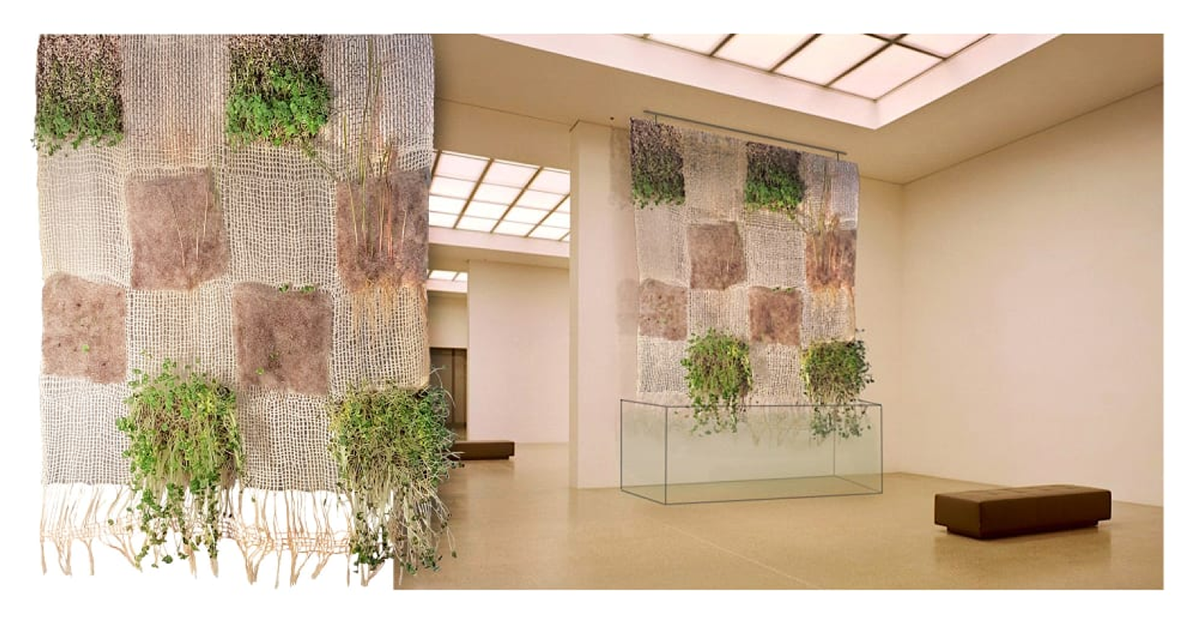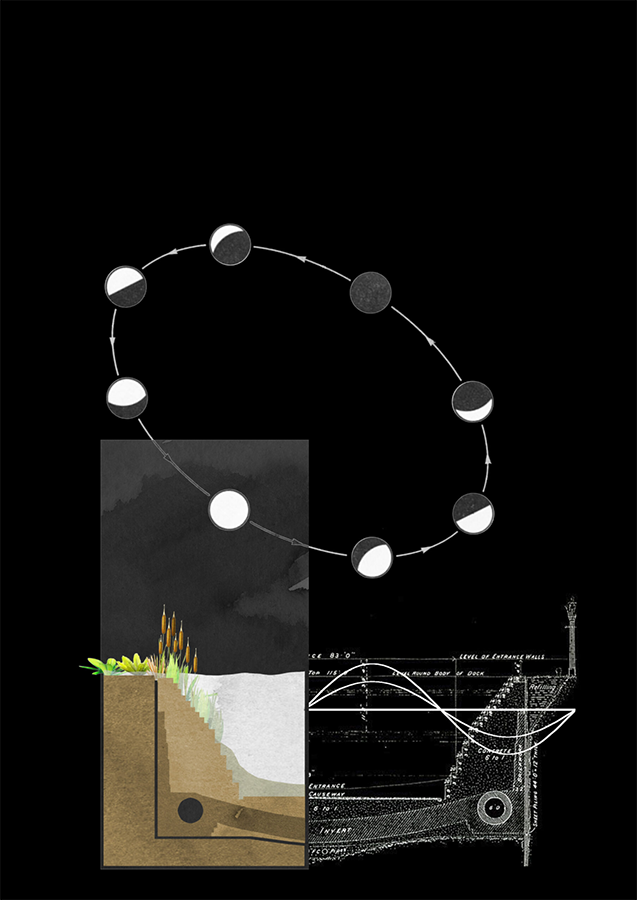
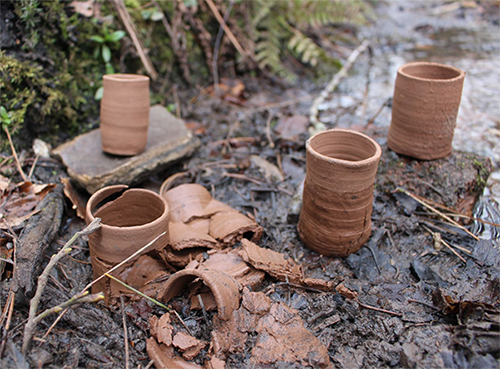

Welcome to this special edition of Flow, The Glasgow School of Art’s magazine for our Creative Network.
As we reflect on COP26, our Director Professor Penny Macbeth introduces the issue's themes of sustainability, protest, innovation, climate justice, and the responsibilities that we all share towards the future of our planet.

Design - Kamilla Hu-Yang
Code - Illes Toth Visualz
Copywriting - Claire Biddles and Angela McManus
Editing - Kirsty L. Barr and Claire Biddles

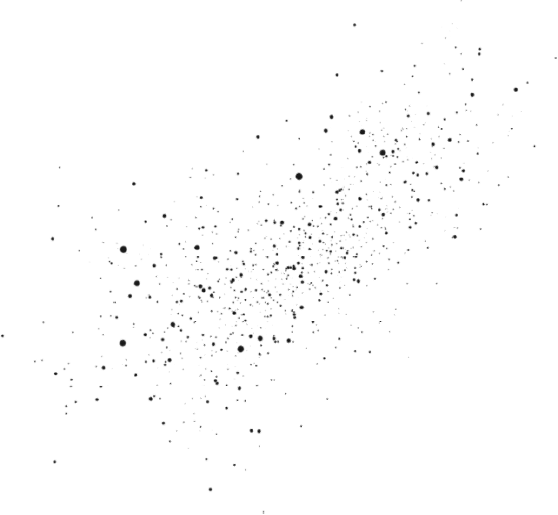

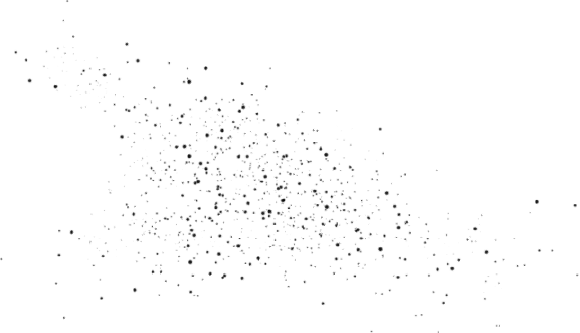
Sculpture Placement Group’s mission is to prolong the life-span of sculptures, bring sculptural joy into people’s lives & offer economic/practical solutions for artists. We are also committed to enabling artists and organisations to work more sustainably. We use circular economy principles such as keeping artworks in circulation for longer, and making sure they reach more audiences and can be available for the artist in future. We run a sculpture loan scheme, a subscription scheme, and help to give a second life to sculptures which have been forgotten or neglected.

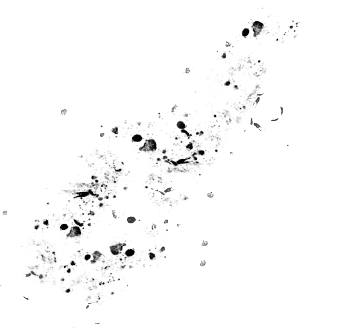
The Glasgow Tool Library works just like a normal library, but instead of sharing books, we share tools. Established in 2017, the tool library is a community-led social enterprise and collective that promotes sharing, collaboration, and learning as forms of resistance, empowerment, and resilience. By creating a communal resource and community-run library we aim to challenge unsustainable relationships between use and ownership, promoting a more collaborative economy and society. Our aim is to bring communities together through the act of sharing by providing people with the tools they need to improve the objects, spaces, and places that matter to them.


Employing a considered selection of materials, 3D printed and handmade components, Karen creates refined silverware and jewellery using 100% recycled precious metals and other responsibly sourced materials. She is inspired by ‘tools’ built in order to explore outer space and how the invisible is revealed through these tools. The relationship we have with the universe, questions of time and our existence are also underlying subjects of her work. Westland advocates for responsible practices through innovative craftwork and research and aims to offer clients luxury products with narratives worth celebrating.

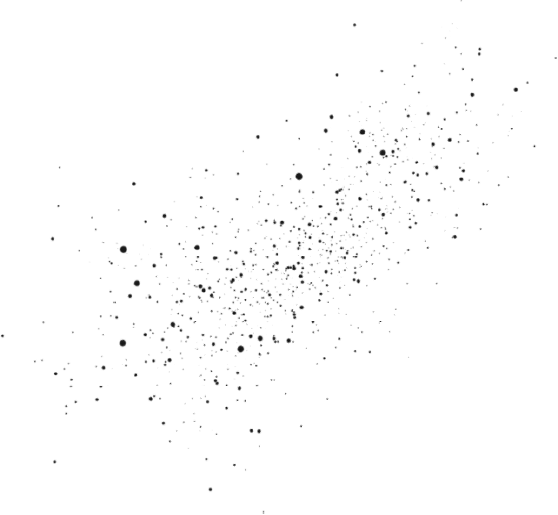

POTR is a Glasgow-based brand who are using recycled fishing nets to revolutionise the humble plant pot. POTR Pots are flat pack, origami, self-watering planters made from 100% recycled fishing gear and are manufacturesd and assembled in the UK. They are designed to fit in a standard sized envelope and can be posted directly through a letterbox so customers never miss a delivery. POTR takes a ground up approach to sustainable design by taking a holistic view of the product life cycle. The plant pot is the first of many reinventions in the pipeline.
Christina is a Textile Design graduate working as the Sourcing & Sustainability Executive at ABANA in Mauritius. Driven to highlight the cultural wealth and expertise of the African continent, her work relies on encouraging socio-economic growth through the fashion industry while being aligned with sustainable practices.


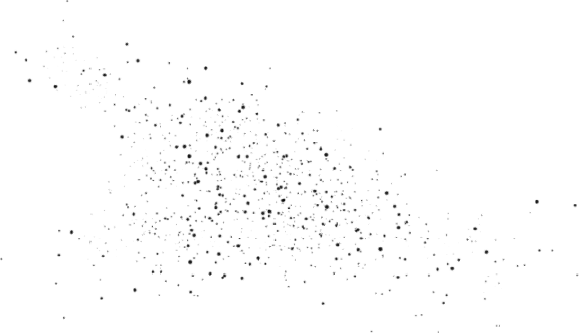
James Pfaff’s Returning And Into Your Arms is a new site-specific, transient neon and sound installation work at Glasgow Cathedral for COP26 and beyond. Filled with inert gas and brought to life with electricity, the work has its own soul and spirit; it is a sacred and spiritual light, a living structure. Many meanings co-exist within the work - but at this critical moment during our climate crisis, an encouragement to return to nature is one. Using the work to activate the space, the physical layout of the Cathedral promotes the idea of a positive forward movement.

AllotMe is a first-of-its kind marketplace for garden sharing, specifically aimed at growing food. Often described as the ‘Airbnb for gardens’, we connect empty outdoor spaces with would-be vegetable growers. Users can list their space to become hosts, or find a plot to start growing their own food. Through renting an AllotMe plot, you can help to reduce your carbon footprint, eat healthily, improve your mental health through gardening, and engage with your local community.


Cassandra Belanger runs The Stitchery Studio in Glasgow, is Co-founder and Director of the Zero Waste Design Online Collective and a founding member of Sustainable Fashion Scotland. Her work challenges makers, designers and educators to think through the social and environmental impacts of their practice, exploring issues such as zero waste, intersectionality, transparency, feminism, sizeism, and body image.

Circular Arts Network (CAN) is a circular economy tool created to support the arts. It is a ‘go-to’ location that helps people working in the arts reuse and recycle easily, while also supporting other sectors to recycle their excess materials in a different way. CAN is a cross-artform resource, which welcomes users from all creative communities, including stage, screen, music, visual arts, dance, craft and more. CAN also helps share transport, equipment, time and other necessities.
After declaring a climate emergency in 2019, and leading a huge presence at the same year’s climate strikes, it’s no surprise that the GSA Students’ Association has been hugely active during COP26. Activities kicked off with a joint celebration with our neighbours, marking 30 years of Garnethill Park, and continued with banner making and participation in the huge Youth Climate Strike on Friday 5 November. Students also took part in a number of Climate Fresk workshops, organised exhibitions in the Assembly Building, and donated to a clothes drop-off to support Indigenous Leaders arriving in Glasgow for the conference.
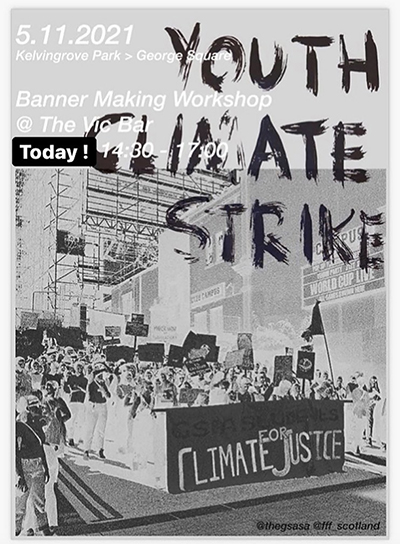
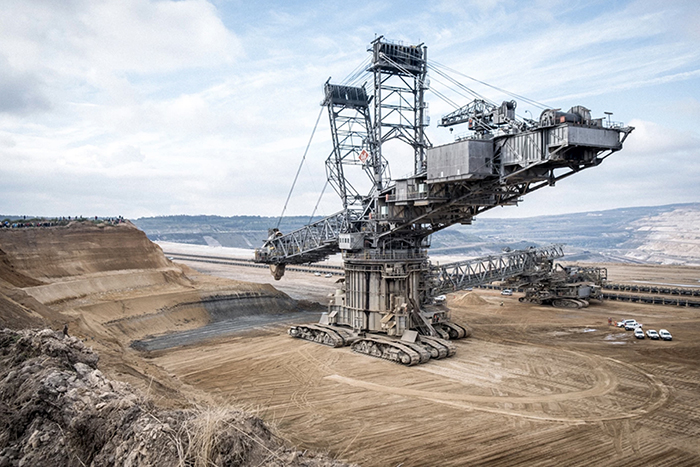
The GSA’s neighbours at the Centre for Contemporary Art presented three international perspectives on climate change. The Word for World Is Forest brought together Canadian documentary film initiative Our People, Our Climate, German photographer Sophie Reuter, and US indigenous charity If Not Us Then Who? for an exhibition of film and photography, coinciding with a programme of events hosted by the likes of Sheffield DocFest, BUZZCUT and Scottish Youth Theatre.
The ocean provides over half of the oxygen we breathe, absorbs our carbon dioxide, provides
us
with
food and supports the livelihoods of millions of people. Climate change and overconsumption
means
there could be more plastic than fish in the sea by 2050 – but the One Ocean Hub, co-led by
GSA
researchers, aims to tackle these urgent challenges. The Hub is an international programme
of
research led by the University of Strathclyde, seeking to balance multiple ocean uses with
conservation through changes in law, science and policy. The Hub strives to empower the
communities
who are most reliant upon the oceans to inform these decisions, based on multiple values and
knowledge systems.
Dr Stuart Jeffrey of the GSA’s School of Simulation and Visualisation is one of five
Co-Directors of
the Hub, with SimVis also playing an integral part in the Deep Emotional Engagement
Programme
(DEEP), which supports community-based art projects in partner countries that explore
emotional
attachments to the sea. During COP26, the One Ocean Hub hosted 13 events with various
partners,
including panel discussions, exhibitions and a virtual ocean pavilion.
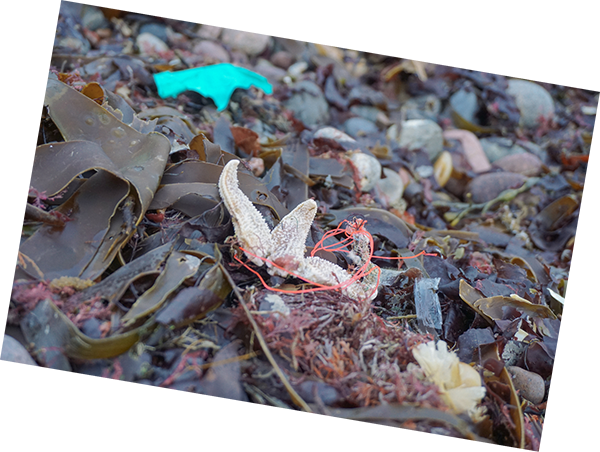

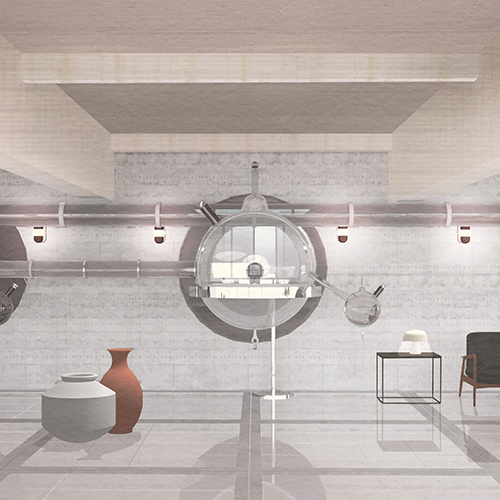
Rather than looking for a technological fix to global warming and the climate emergency, we should be considering the role creative practice can play. Working in collaboration with scientists, engineers, economists and thinkers, arts and culture can make a significant difference.
That’s the belief of Allan Atlee, Deputy Director Academic The Glasgow School of Art, who co-convened a series of online roundtables with staff and students from the GSA and the University of the Arts London during COP26. The theme was culture as the fourth pillar of sustainable development – in addition to economic viability, environmental protection and social equity – opening up debate on the challenges to education and the possibilities of the future that lies ahead.
Traditionally, the arts have had an important societal role in helping us understand the beauty, power and interdependence of nature. Creative practitioners are now capable of thinking about sophisticated, complex systems, which resonates with our attempts to tackle the climate emergency.
“What we're seeing more and more often is scientists and engineers – in addition to art, design and architecture practitioners more generally – come to The Glasgow School of Art to collaborate and research on joint initiatives,” explains Atlee. “They can see the value of having people who think and practice differently to them; who have different methods and approaches.
People who come to art school seeking a career or practice in that space, tend towards optimism,” he continues. “And they tend towards believing that better worlds are possible. A lot of practices are trying to think about how to imagine or create those better worlds. Increasingly, our students are interested in pointing out the problems and shortcomings of how we currently do things.” Atlee refers to United Nations and UNESCO sustainable competencies, from system thinking and collaboration to problem solving and empathetic skills; qualities good artists, designers and architects embody in their practice.
For a number of years, the GSA’s Innovation School has been working with the Scottish Government and various health boards on projects that focus on how they function, and what changes can be made to make services work more effectively for patients. They lead the way in the thinking that a collaborative and inclusive design process means different perspectives are understood. It follows that more marginal groups in society are understood and included.
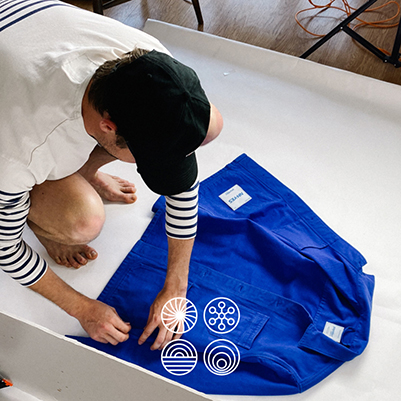

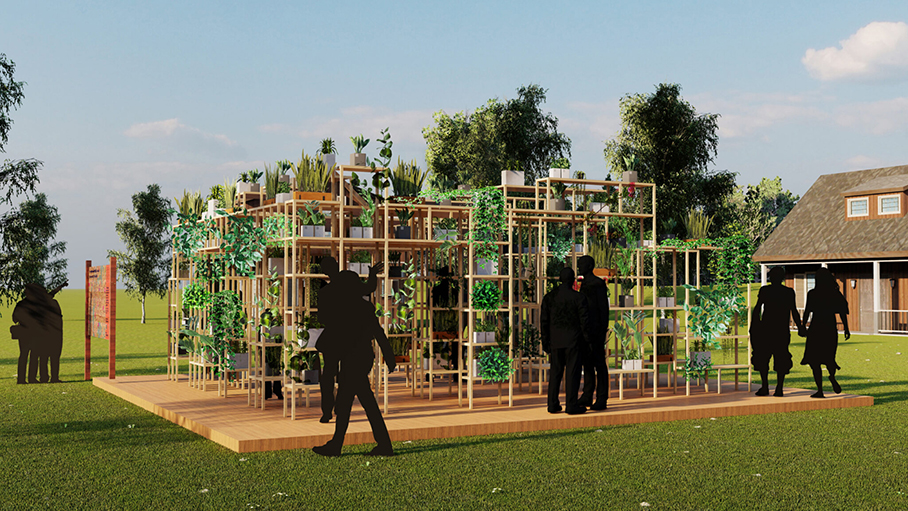
Meanwhile, emerging disciplines, such as bio design, are looking at how materials can be grown from primitive cell structures, thereby putting an end to the harvesting of raw materials with significant environmental and ecological damage. “There has always been an innovation base in our subject areas,” stresses Atlee. “Some art schools have gone on to align with UN development goals. At GSA, we’re having those conversations about how we can do that with our teaching, research and knowledge exchange. I don’t think art and design institutions are exceptional – all physical institutions are having to think hard about the role they can play.”
How we work across borders and boundaries, forging global alliances to share knowledge and expertise is key to discussions on climate change. That could mean sharing researching and teaching materials, and networking with students and people from around the world.
About one-third of GSA’s students come from overseas, bringing first-hand life experiences of the effects of climate change, especially in the global south. That’s a powerful way for western European students to understand what’s happening in the world and develop an immediate level of empathy and engagement. “That can only be good for the people who will be making the changes in the next 10 to 20 years in terms of net zero targets,” adds Atlee.
Culture is at the very heart of our ability to live well together on this planet, according to UAL’s Dilys Williams, making this an incredibly important time for artists, designers and architects to think about how they express values through their work and in their daily lives. She names fundamental questions of values, worldview and what underpins individual beliefs as crucial to our ability to make change.
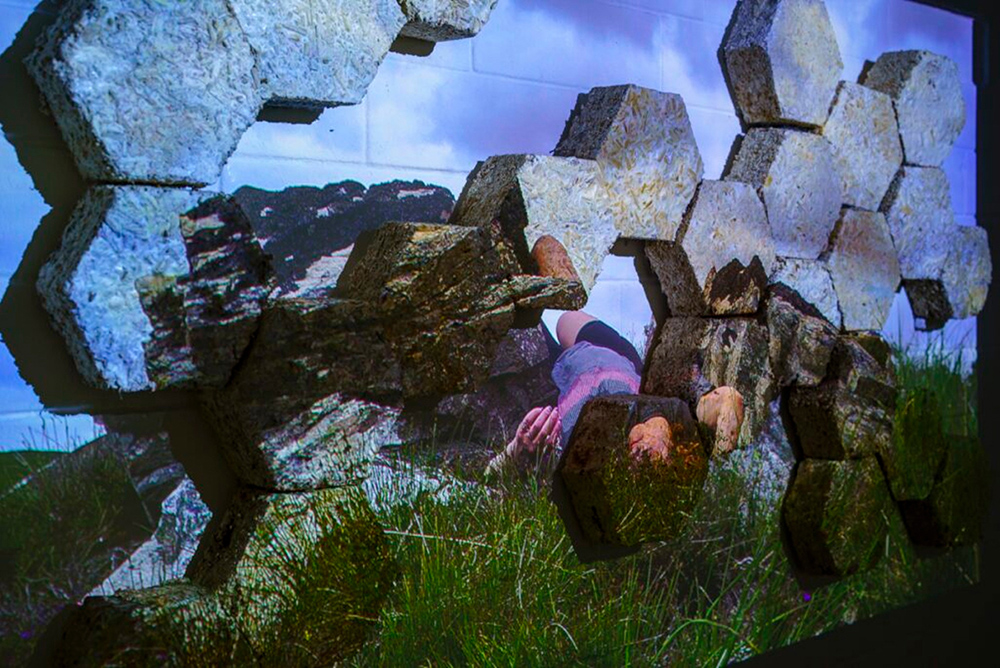

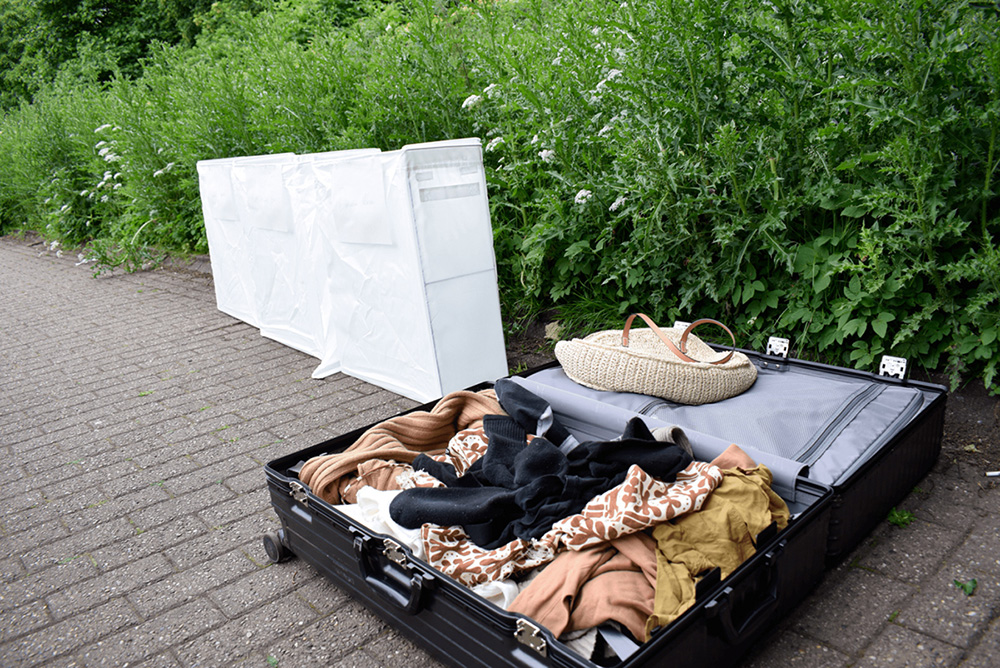
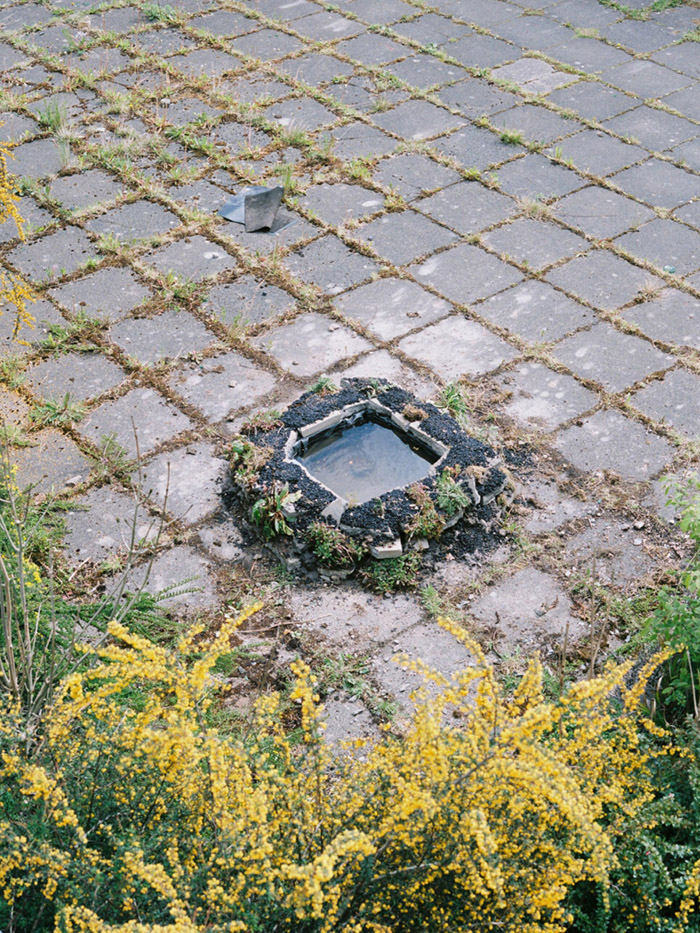
Williams is the founder of the Centre for Sustainable Fashion at London College of Fashion, UAL. Originally a fashion designer, she returned to academia to address the implications of what and how we design, make, wear and value fashion in the context of sustainability – in social, environmental, economic and cultural terms.
“Yes there is a need to look at sustainability from a science-based targets perspective and to measure current impacts,” says Williams, “but we will only really change things if we imagine differently. Artists and designers imagine a world that isn't yet but that might be, to reference Richard Sennett. That's what we need.”
The Centre for Sustainable Fashion explores new research thinking, and seeks to develop change in the curriculum and education – not just the content but the pedagogy itself; how we teach and who is involved in education. The centre considers knowledge exchange and how we learn from and with people and communities outside of academia.
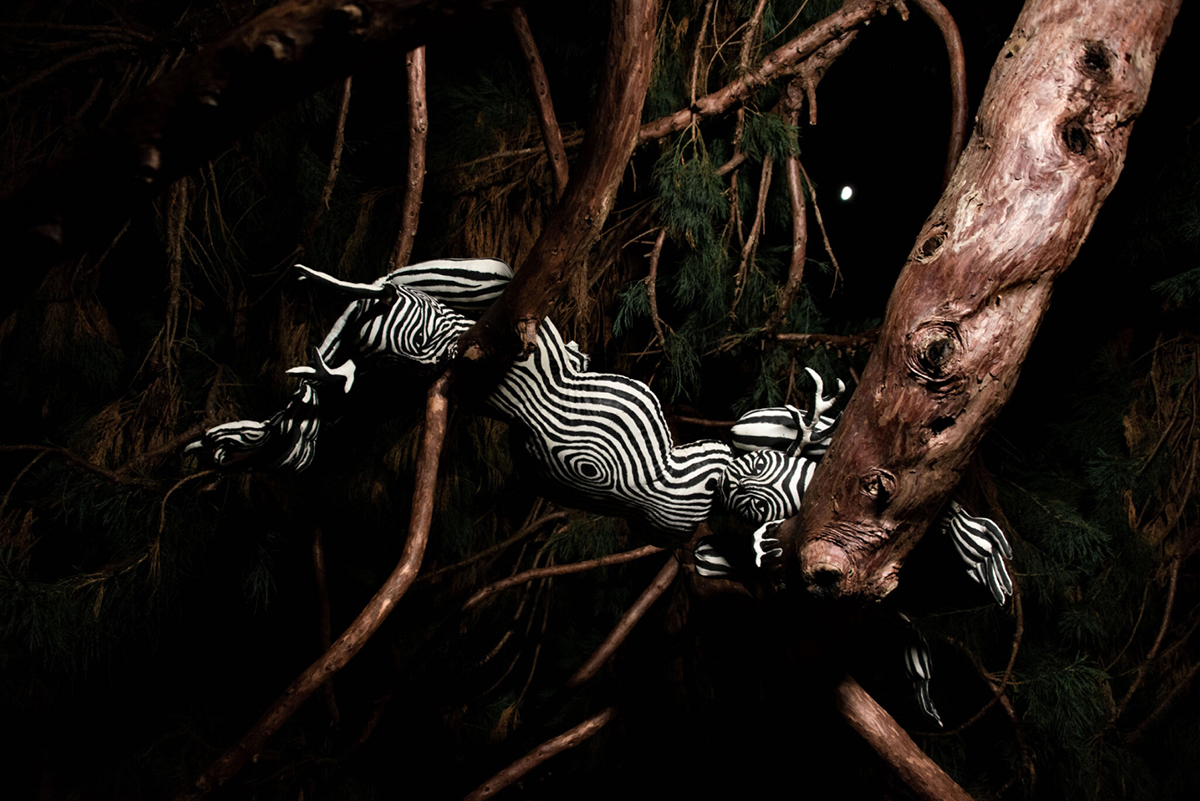
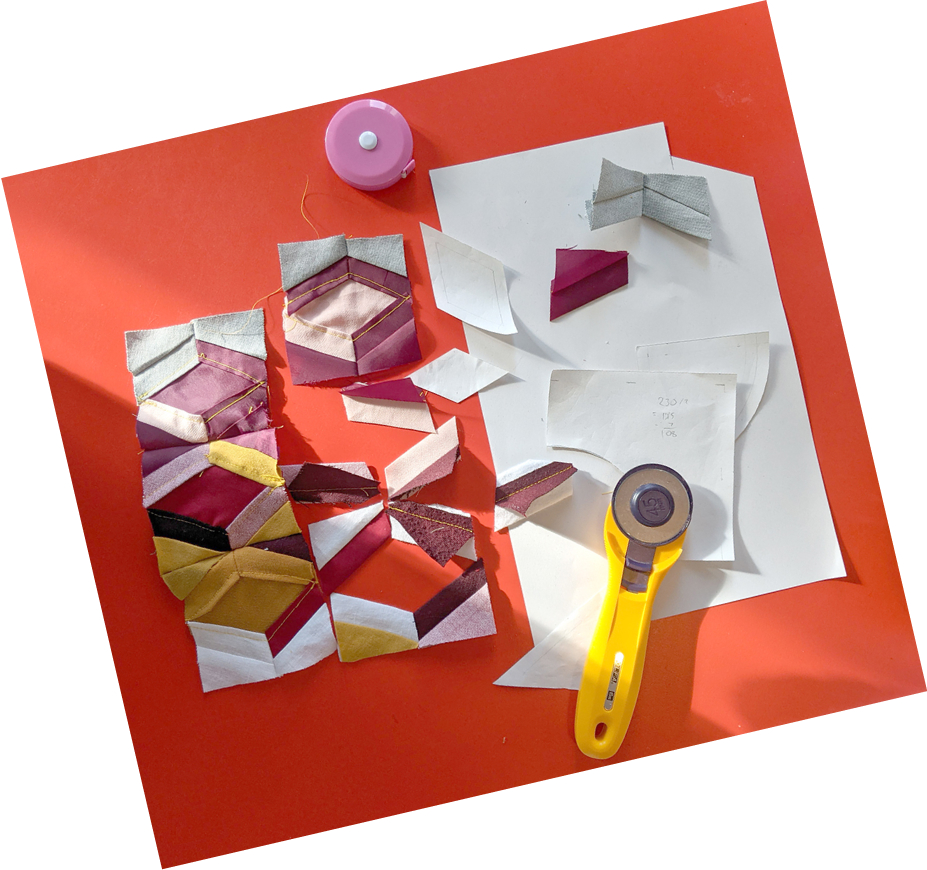
“The traditional model of university was very hierarchical: research-informed teaching, research-informed knowledge exchange, or students responding to industry needs,” adds Williams. “Whereas I think the only way for us to have a symbiotic process is to have a co-inquiry across those three domains.”
Hearing different perspectives on what we mean by culture in relation to the climate emergency, and whether the climate emergency makes us think about cultures differently is important to Williams. Imagining what a decarbonised and decolonised future looks like goes beyond problem-based approaches of design.
“Through my research, I have looked at the idea of designers as possibility creators more than problem solvers,” explains Williams. “Rather than starting with a problem, start with the imagination, with the scenario, with a speculative design approach to consider what living well could look like. Then create it.” She references the book Speculative Everything by Anthony Dunne and Fiona Raby, which refers to it being easier for us to imagine the end of the world than it is to imagine the end of capitalism.
“It is very difficult in the middle of everything to actually imagine beyond it,” she concludes. “It’s easier to imagine the apocalypse, but it's not so easy to imagine a thriving world and what that will involve.” That’s where creative education, research and knowledge exchange can coalesce with problem-solving and possibility-making – creative thinking that offers solutions.
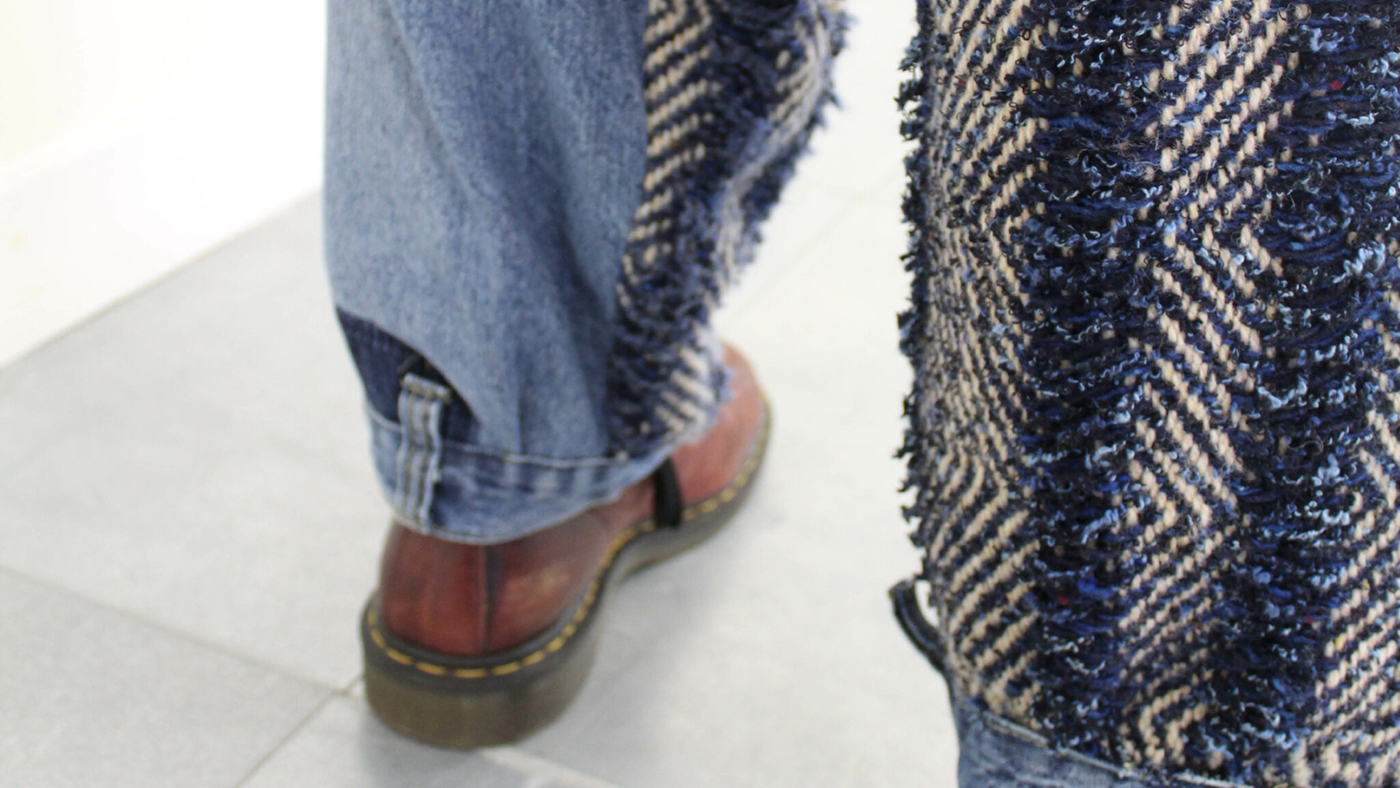
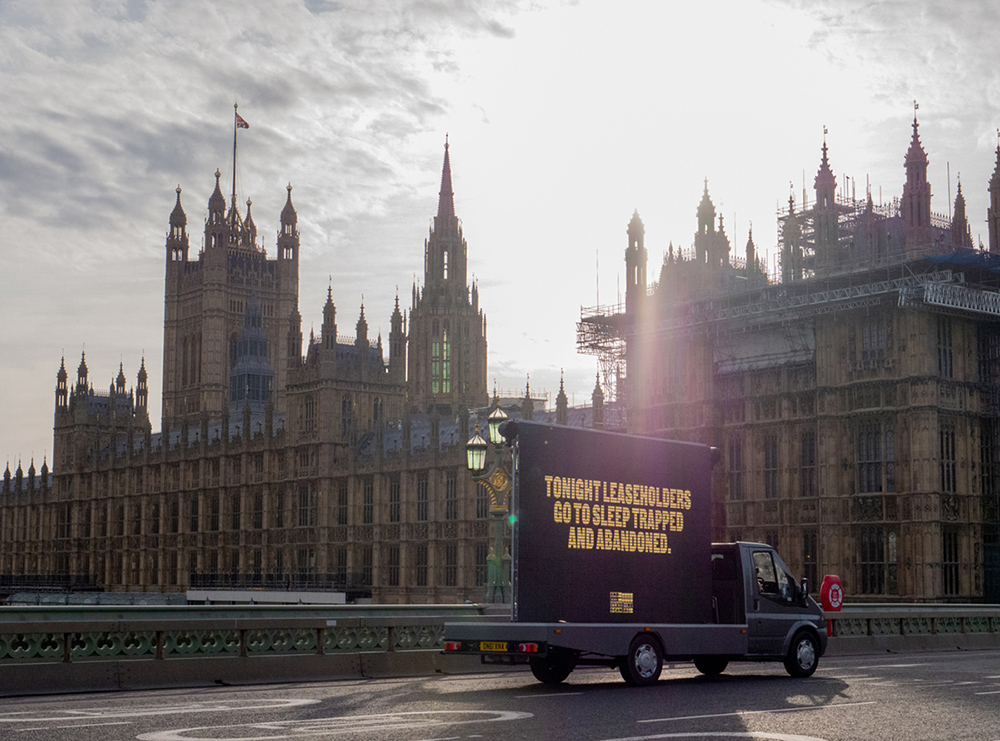
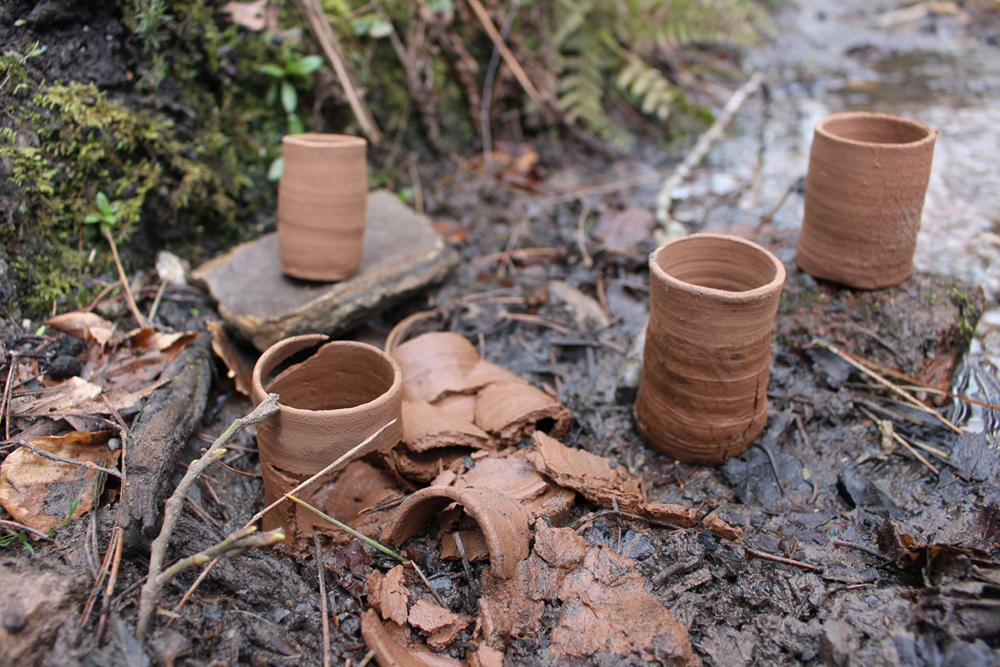
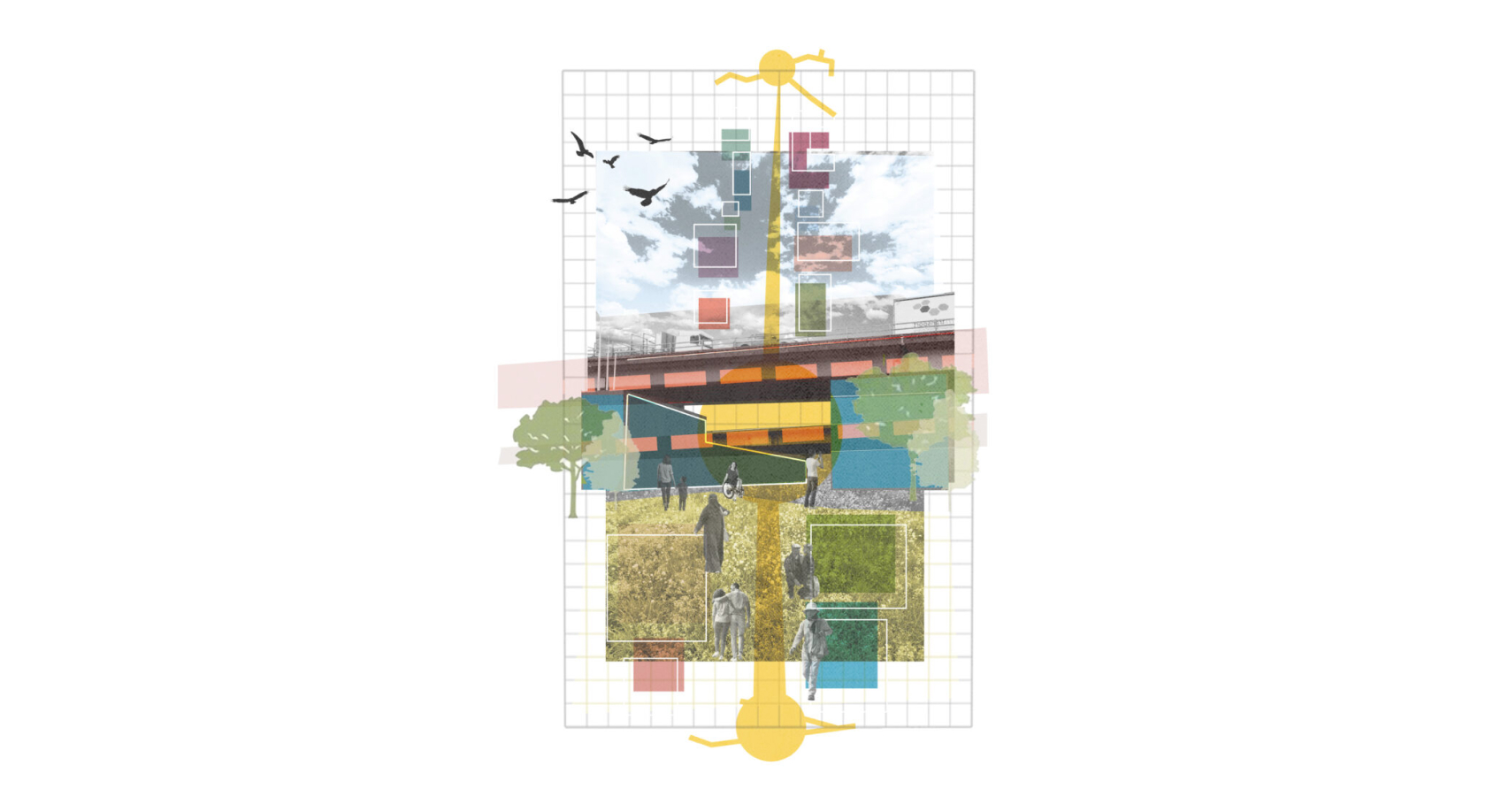

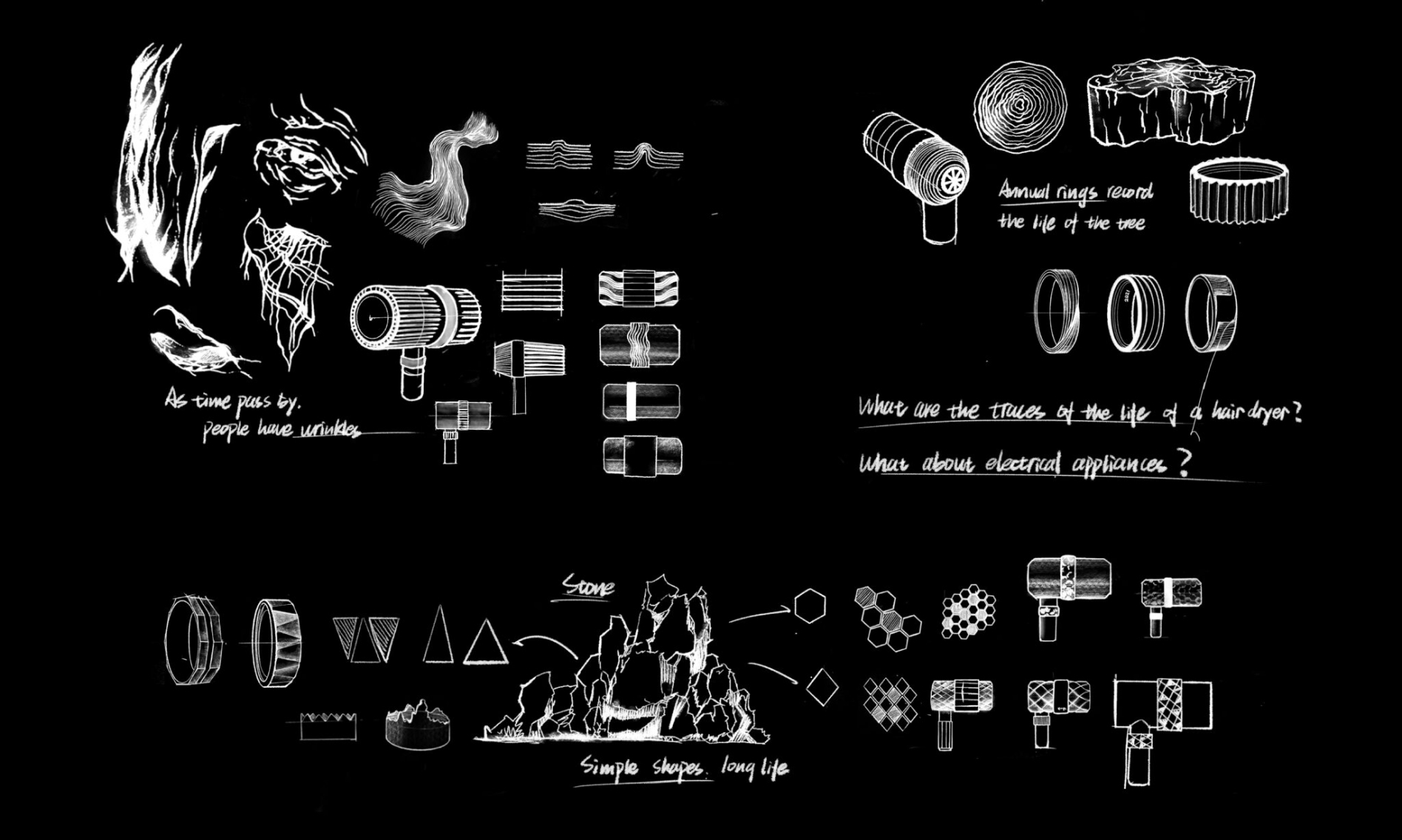
For this semester’s Friday Lecture Series, The Time Is NOW, the Mackintosh School of Architecture invited a selection of architects to talk about how the profession can make a difference in tackling the climate emergency. Curated by Missing in Architecture – a group of five GSA tutors dedicated to promoting creativity and action within the profession – the series’ speakers include Sofie Pelsmakers, Studio BARK and Dr Barnabas Calder, with public online lectures taking place on Fridays at 5pm.
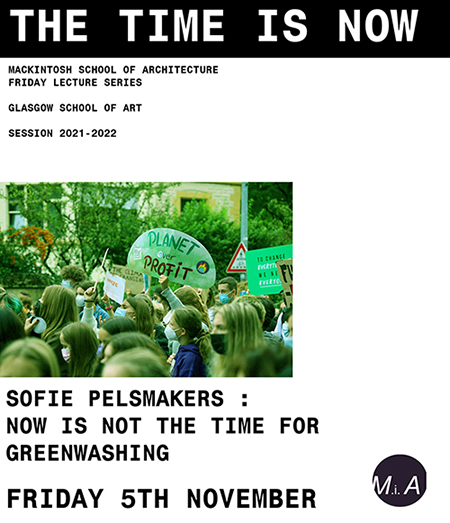
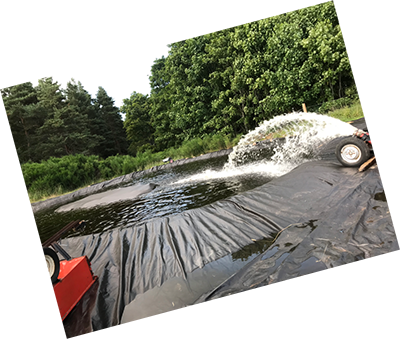
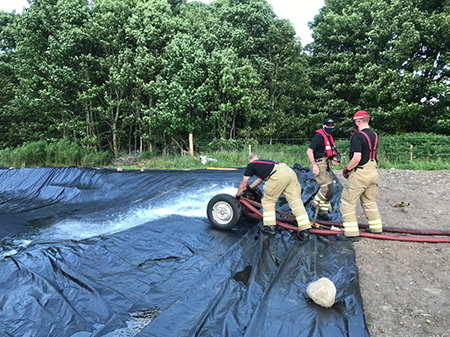
A polyculture garden has been created at GSA’s campus in Forres, with hydroponics and
aquaponics.
The plan is for students to use the garden as a sustainable resource: to grow and eat their
own
food, harvest seeds for the following year’s sowing cycle and use the pond and its waste to
feed
the
garden. Garden activities take place all year round, though the site plays a primary role in
the
second semester as the focus of the elective in Permaculture, an accredited course which is
available across all taught postgraduate programmes on both campuses.
In response to student feedback from the Permaculture course, a closed aquaponics system is
being
set up that uses reed beds and oxygenating plants to condition fish waste in a
custom-designed
Lochan. This then feeds the new nutrient film hydroponics setup in the poly-tunnel. A set of
teaching pods have also been commissioned that will not only allow the theoretical parts of
the
Permaculture course to be taught within the context of nature, but give programmes such as
Design
Innovation and Environmental Design the opportunity of relating the curriculum to natural
systems.
Students from the Mackintosh School of Architecture have been involved in an award-winning
project
to design and build a hybrid, eco-sustainable and accessible open landscape classroom at
Cove
Park.
Working with Scottish architect Tom Morton of Arc Architects and a multidisciplinary team
from
across the country, they created spaces conducive to knowledge exchange around the impacts
of
climate change on water.
A collaboration between Scotland and Ghana, the other project lead was Ghanaian-Filipino
agrowaste
designer Mae-ling Lokko, who worked with the interdisciplinary Ashesi Entrepreneurship
Center in
Ghana, where a prototyping workshop was created in Accra’s Klottey Korle Constituency. The
ambitious
project was the winner of the British Council Architecture Design Fashion’s Future by Design
open
call, and was realised in the lead up to COP26.
“It was all about pushing multi-disciplinary, inter-disciplinary and cross-disciplinary work
around
design and architecture in relation to climate change,” said Francesca Bertolotti-Bailey,
CEO of
Cove Park. “The idea was based on the difficulties of managing flooding in Scotland and
Ghana,
and
around what good sustainable, natural organic design can do to operate as a management
infrastructure to prevent or manage flooding.”
The sustainable structure at Cove Park was built by hand and made from wood, positioned on
top
of
concrete foundations at the site dating back to the Second World War. “This is an exciting
project
showcasing emerging approaches to sustainable and generative construction,” said Tom Morton,
Director of Arc Architects. “In their future careers, these young designers won’t be
building
with
the high carbon methods commonly used today, which contribute so much to the rising sea
levels,
landslides and flooding that threaten both of our countries. Biocomposite materials and
co-creative
design can be a step-change in addressing our common global challenges.”

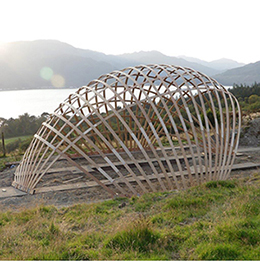
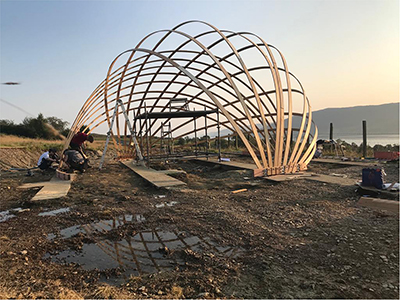
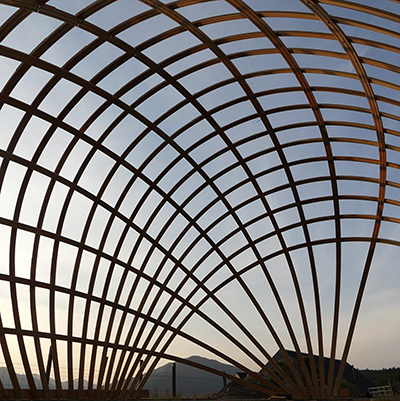

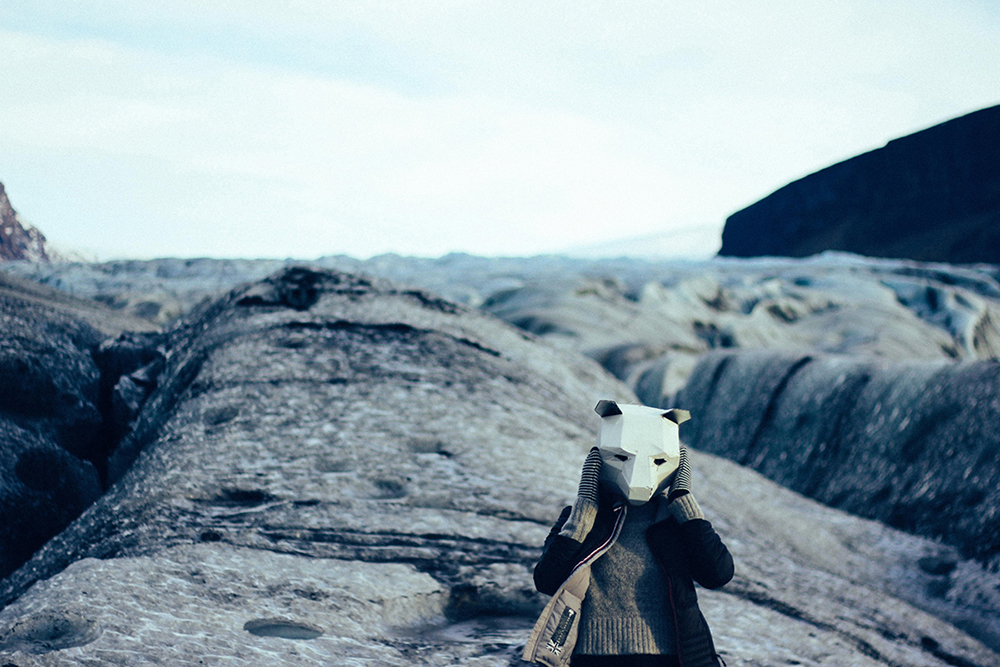
For some, COP26 will ignite fresh thinking; but for many, it fuses current and long-standing ideas. Ways of taking action on sustainability, the climate emergency and climate justice are changing and if one thing is for certain, it’s that the reverberation of the 12-day event in Glasgow will be felt for years to come.
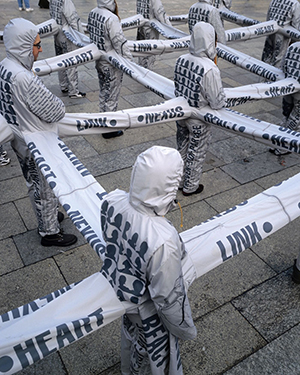
From students to staff, many members of the GSA community have been engaging with COP26 themes before November 2021. While the international event will galvanise debate, it also shines a light on the way forward. Close of Play: Climate Emergency and Creative Action, the year-long GSA event series, aims to act as a springboard for creative thinking. A speaker series with GSA partners will look at everything from how to transform the curriculum in the age of an emergency, to working in collaboration with the science and humanities sectors.
“We’ll have speakers from different disciplines showing the varied aspects of how they engage or take creative action,” explains Jenny Brownrigg, GSA Exhibitions Director and coordinator of Close of Play. “But underpinning it is a real step change in the curriculum, and how these issues can come into the curriculum going forward. If we can create critical literacy around climate emergency issues, that gives students an understanding, and ways of thinking and working following their graduation.”
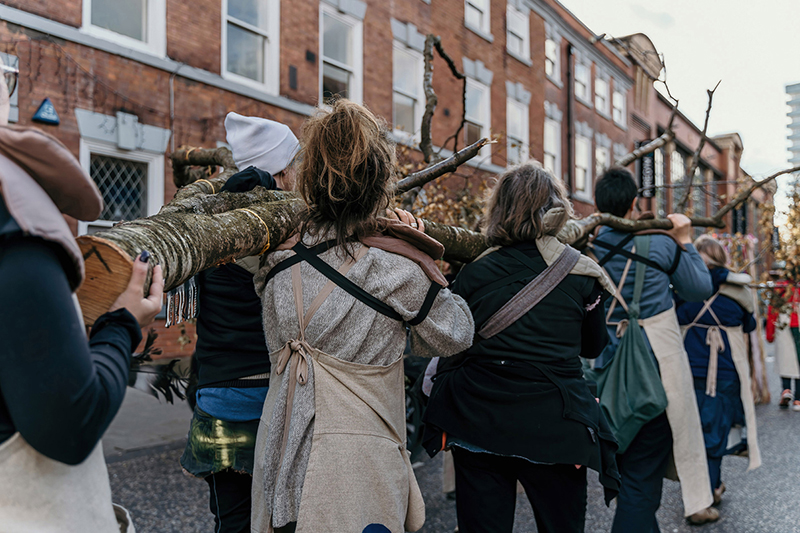
With strong links to GSA, Glasgow Women’s Library features in Close of Play talks about collecting the climate emergency. Again in collaboration with Climate Emergency Network, the events look at ways institutions and museums have begun to collect material related to the climate emergency.
An example of this is the Greenham Common archive, which is kept at Glasgow Women’s Library. A rich source of leaflets, badges, press cuttings and pamphlets, it tracks the years of the peace camp set up in protest at NATO’s 1979 decision to base ground cruise missiles at the RAF base, formerly home to the US Army Air Force.
“It's very easy for there to be amnesia over what things people did in the past that gave rise to radical change. And I think there's a politicising dimension to looking at records, because it's easy to feel as though you don't have any agency and you can't change things,” explains Adele Patrick, co-founder of Glasgow Women’s Library. “These are records of how women who had no real resources – there was no social media, no internet – nevertheless changed history. There is an empowering dimension about coming across records.”
As well as working with all of GSA’s departments and partner organisations from around the country, the events offer an insight into work and projects already underway. And in the semesters to follow, Brownrigg will be supporting students to develop their own events as part of the programme.
The first Close of Play event, in the weeks before COP26, was hosted by Sculpture and Environmental Art in association with University of The Arts London’s Climate Emergency Network. It introduced the ten year collaborative artwork Walking Forest, which links women, forest ecology and activism. The project looks back to the collective actions of campaigners for women’s suffrage and onward, to the next 100 years when standing together for the wellbeing of the Earth is key to our planetary survival.
Anne-Marie Culhane of Walking Forest says working with GSA students recently has been an opportunity to look at how students work together, in a way that's respectful, non-hierarchical and hopefully dynamically creative. “Walking Forest is a collective of artists with very different practices,” she says. ”Our work crosses into activism, performance, visual art and social practice, so this requires emergent and agile strategies for making work.
“In a forest the trees share an underground mycelial or fungal network linked to the root systems that share resources and information. The relationships are complex, including elements of both competition and collaboration that researchers still don't fully understand, so it breaks down this idea of the individual existing in isolation. The time of the lone wolf is over. We're exploring a more collaborative approach to making artwork, across art forms and working with communities and people in other disciplines – very often scientists, biologists or botanists." There has also been a focus on the material used and its impact, fundamental themes which are embedded in the curriculum.
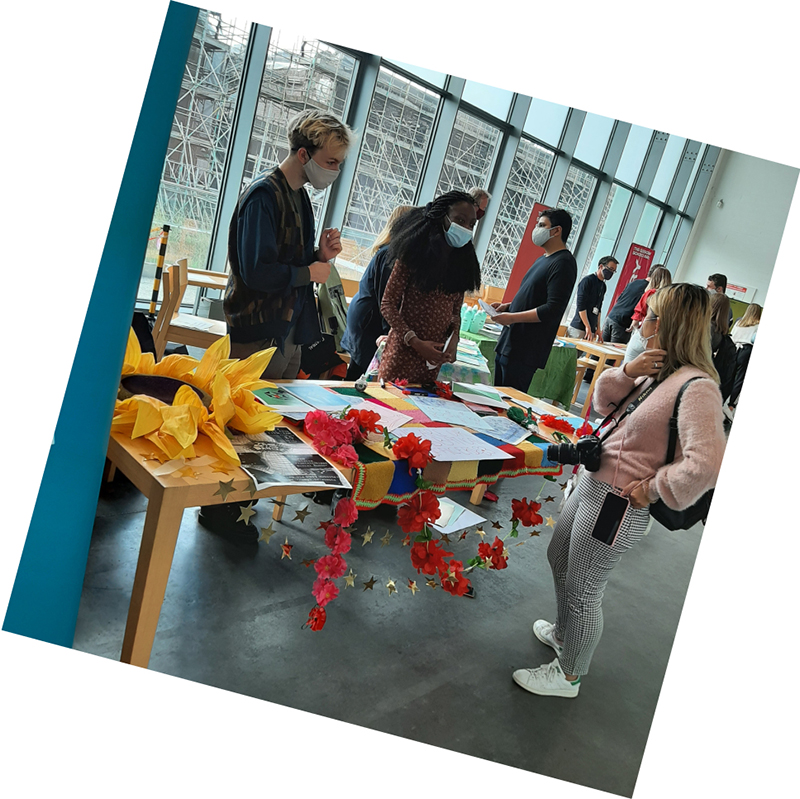
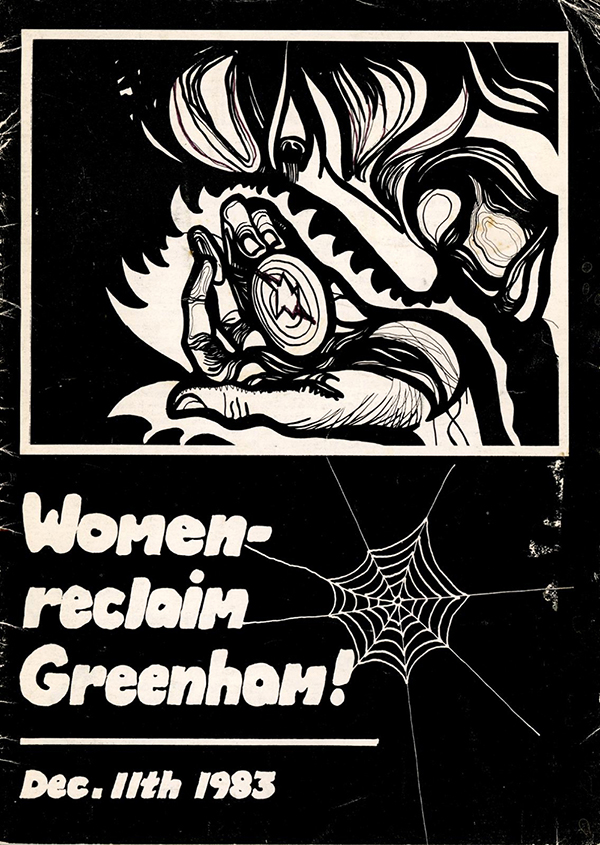
“Those involved in activism, it's unlikely they are thinking that they are making history,” she adds. “Their focus is very much on: this has to happen now, somebody’s got to do something and if I don't do something, nothing will happen. When we look through these materials, it's a really powerful reminder that passion-fuelled projects can change lives.”
The number of activists arriving in Glasgow for COP26 poses the perfect opportunity for the library to collect ‘live’ material. In fact, current events can often link to our past, according to Patrick, who explains that a collection recently handed over to Glasgow Women’s Library was a precursor to today’s Insulate Britain protests. The lack of insulation in Glasgow’s housing was a massive issue in the 1970s and 1980s and one of the leaders of the city’s Dampbusters protest has entrusted material to the care of the library.
“We know of three generations, if not more, of women who came into the Women’s Library as young firebrand activists or were involved in demonstrations, and have grandchildren who may be involved in climate emergency struggles today,” says Patrick.

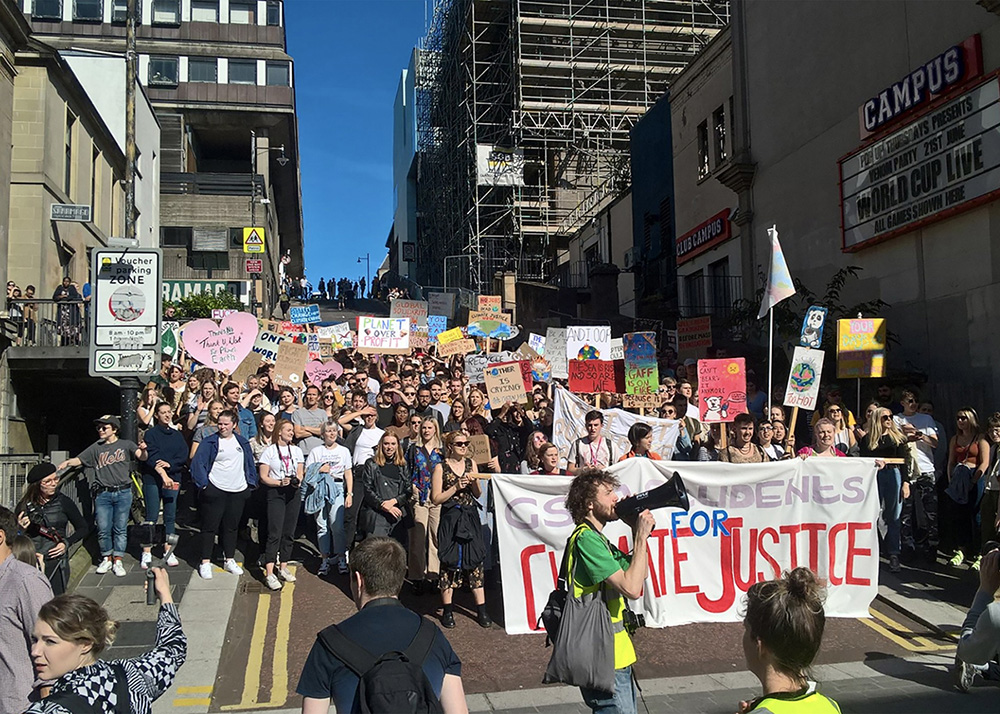
Back at the GSA, the Students’ Association declared a climate emergency two years ago, and it has become an integral part of decision-making, according to Student President Rory O’Neill. From a School-wide perspective, he believes the conversation is overdue. “With an increased focus on equality, diversity and inclusion, there is scope for a sustainability framework to be put in place and I’m really excited that is happening soon,” he says. “On a curricular level there has not been that much oversight of sustainability and sustainable practices. In the curriculum it’s seen as an alternative, but students really engage with it. Given the nature of our programmes, we are quite practical and are all about making, using materials and engaging with materials.”
O’Neill calls for a move forward from isolated projects to something more universal. “One point I mentioned during my student president campaign was the implementation of sustainability impact assessments. Similar to how we have equality impact assessments, we need to be considering environmental impacts,” he says. “At the moment that is starting to crop up in certain areas but it should be standard practice across the School.”
At the top level, the year-long events series Close of Play will feed into the School’s strategic plan, while at grassroots the hope is that it will help inform students to consider different ways of working. There’s a plan to gather a resource of the recommended reading from speakers, which can act as a subject guide in the library.
“Creative practice is about inspiration: what inspires you to make your work and your selection of discipline,” concludes Jenny Brownrigg. “Also what's your purpose, what can your work do? This events series will hopefully provide different examples and ways of working that will inspire people going forward.”

COP26 is for two weeks, but the GSA’s commitment to climate action and literacy will extend into the future, with sustainability forming a central part of our next strategic plan. On an ongoing basis, we would like to be in dialogue with our community of students, staff, graduates and partner institutions.
Please email us at flow@gsa.ac.uk with any news, suggestions, or to partner with us.
Work by Silversmithing and Jewellery students interrogated ideas around materiality during COP26, with the exhibition Precious Encounters. Held in Glasgow Central Station and online during the conference, the exhibition explores ideas of ‘preciousness’ and the climate emergency, questioning what is considered precious in our world today. Following on from the highly successful Bus Stop Jewellery Conversations project earlier in 2021, the public display of the work invited the public to engage and explore how we articulate precious encounters through social commentary, emotional connections and reinvention of materials.
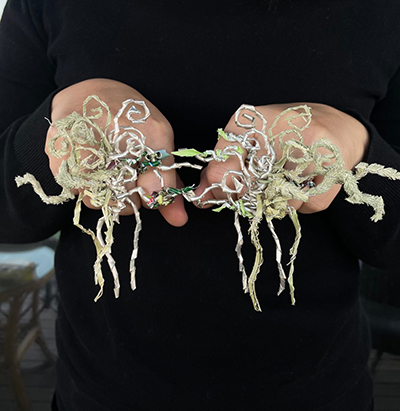
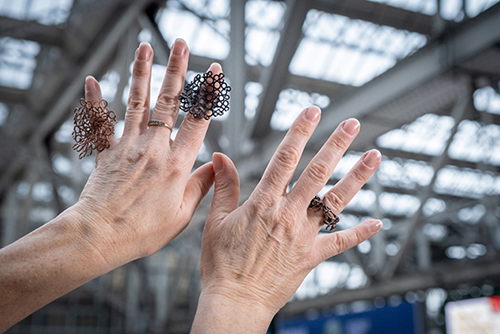
Sculpture and Environmental Art graduate and artist-activist Darren Cullen brought his Hell Greenwashing Roadshow to COP26, in collaboration with the GSA Students’ Association. Halfway between a satirical take on a marketing showroom and a museum of climate action artwork, the biodiesel-powered bus takes up residence outside the GSA's Stow Building for the second week of the conference.

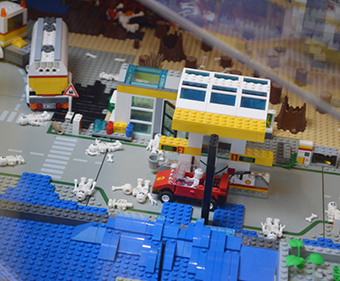

On Friday 12 November, the School of Fine Art invited artist Wayne Binitie to headline the Friday Event. In this lecture, Binitie talks about his new work 1765 - Antarctic Air, which features in Glasgow Science Centre’s Polar Zero exhibition during COP26. The work – a glass sculpture containing Antarctic air from two and a half centuries ago – is a subtle but powerful marker of the change in the Earth’s atmosphere over the last 250 years.
In the latest iteration of their social sculpture Nexus Architecture, initiated in 1993,
Studio
Orta
have made 50 blank canvas overalls for GSA and University of the Arts London (UAL) students
to
customise in a series of workshops, creating an interconnected chain of solidarity from
Glasgow
to
London.
50 students from the GSA created a customised response to the climate crisis, reflecting on
the
question ‘What Would The Earth Have Us Do?. UAL students then further customised the suits,
which
were used in a public performance in front of Tate Britain as part of the Carnival of Crisis
Parade
for Climate Justice. This Nexus Architecture activation has been supported by Art of Change
21
with
Schneider Electric Foundation and is part of ART-CLIMATE-COP 26, Art of Change’s programme
of
events
for COP26.
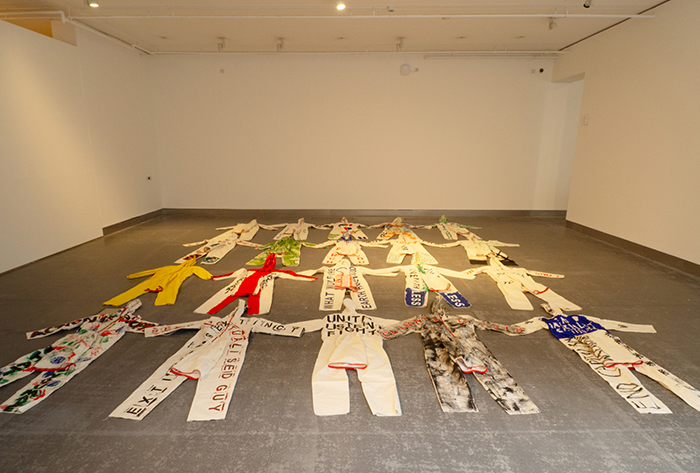
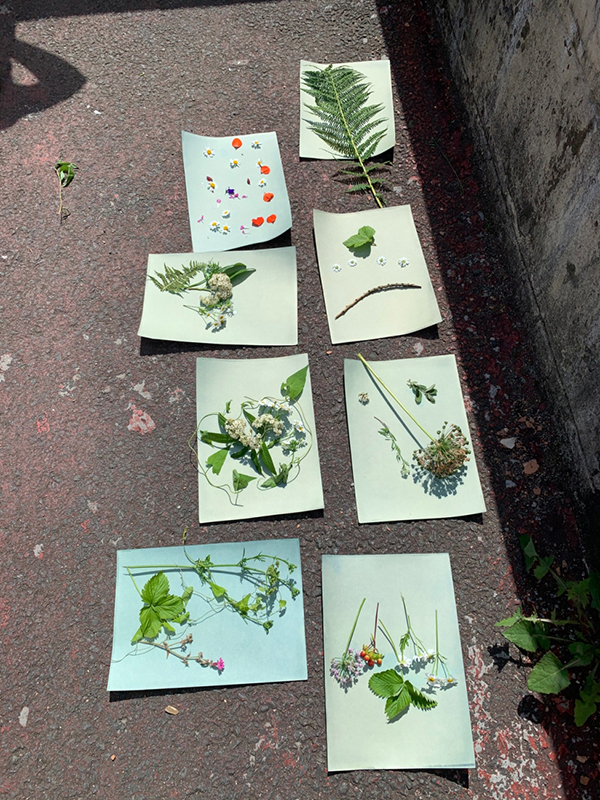
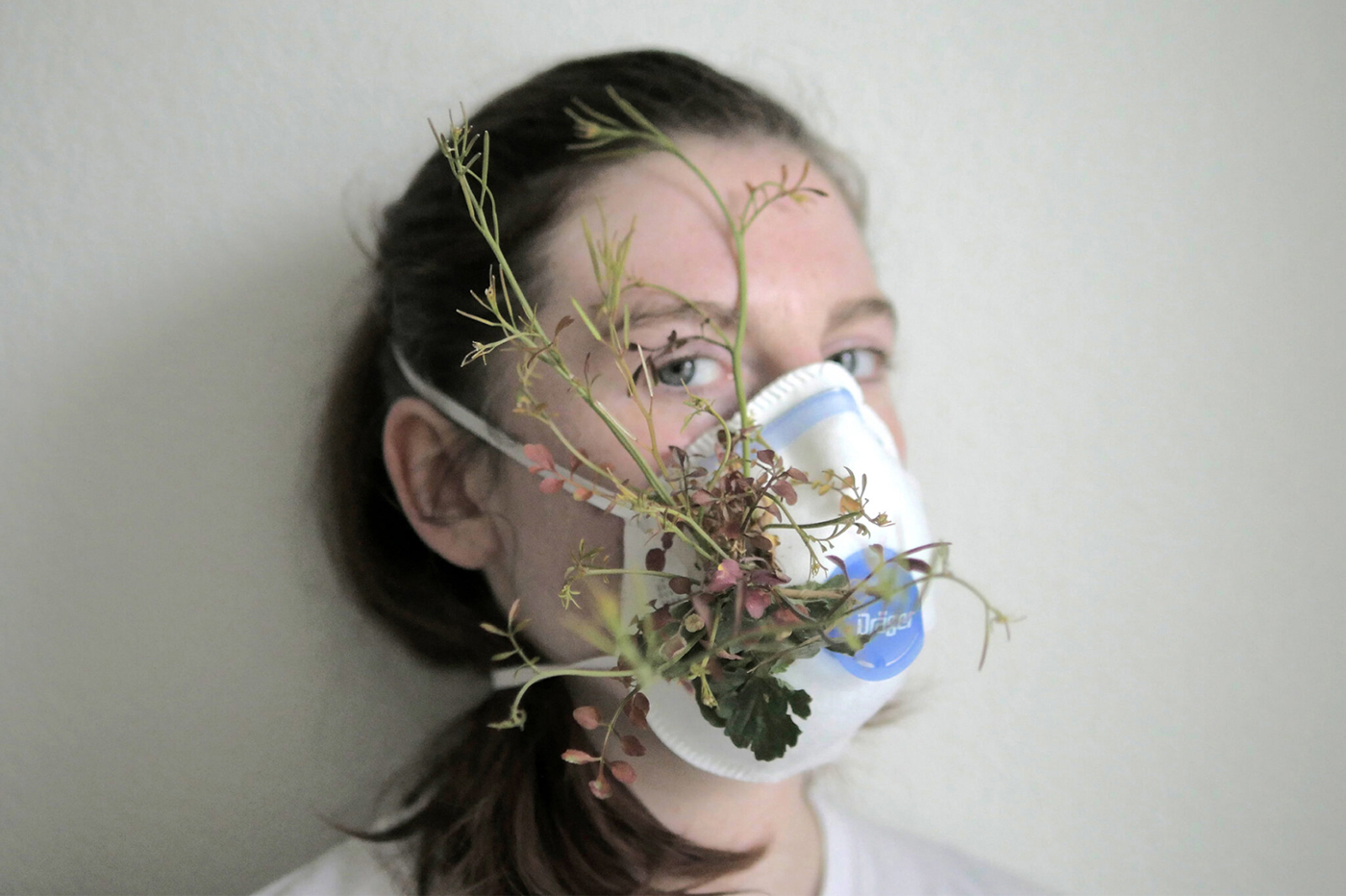
From the materials used in studios to how to travel to campus and what we do when we’re there, it’s no surprise the concepts of green living can be overwhelming. Factor in energy efficient measures and the best use of resources and the question is: can we do enough?
GSA’s commitment to a greener estate has been ongoing for many years but thinking has certainly been sharpened more recently. No one is more aware of that than Sustainability Coordinator John Thorne, who has a clear vision of the direction we are headed in.
Working with students and staff, the focus is on environmental issues and social justice as race and gender are inevitably linked in. Making that emotional connection is a logical step for artists and designers, he says.
“There are amazing examples of art and graphic design, illustration and sculpture that make you think, ‘Wow, that's really something, I need to get involved and do something about that’,” explains Thorne, who is also a key member of the GSA’s Sustainability in Action Group.
“All forms of design can be used to change the system. That's where designers come in. Whether it's an interior designer looking at their materials, someone creating a game about climate change, or product design engineers who want to work with the big corporations who are at the heart of the climate problem.”
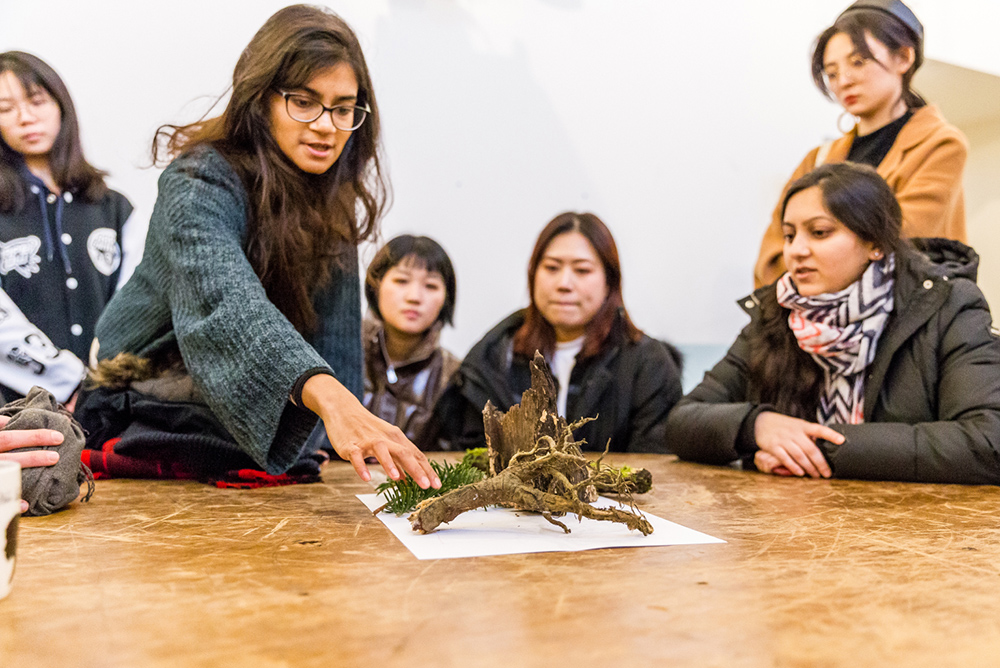

During COP26, Thorne hopes students and staff experience the power of the event, whether attending fringe events, talks or marches, to get an understanding of how it might inform their work, open up debate and creative thinking.
His ambitions for GSA go far beyond recycling and changing light bulbs. Climate literacy courses are vital, tailored to individual subjects and giving people the opportunity to relate directly. These building blocks equip students for the future, opening minds to ideas that can make a real difference. “It's not just the GSA,” considers Thorne, “Though the GSA, at the moment, is not at the back, but it's not at the front either. When people graduate and go into jobs, they need to be climate literate.
“Product design engineers may be going to work for Jaguar. They're going to have to be able to talk about electric cars, driverless vehicles and using better materials and different fuels, because that's what they'll be making in 10 years’ time.” He cites Sally Weintrobe’s book Engaging with Climate Change: Psychoanalytic and Interdisciplinary Perspectives as the starting place for this thinking. It recommends taking meaningful action as the best way to deal with anxiety about climate change. For an art graduate, that opens up a whole world of opportunities: producing work made with awareness.
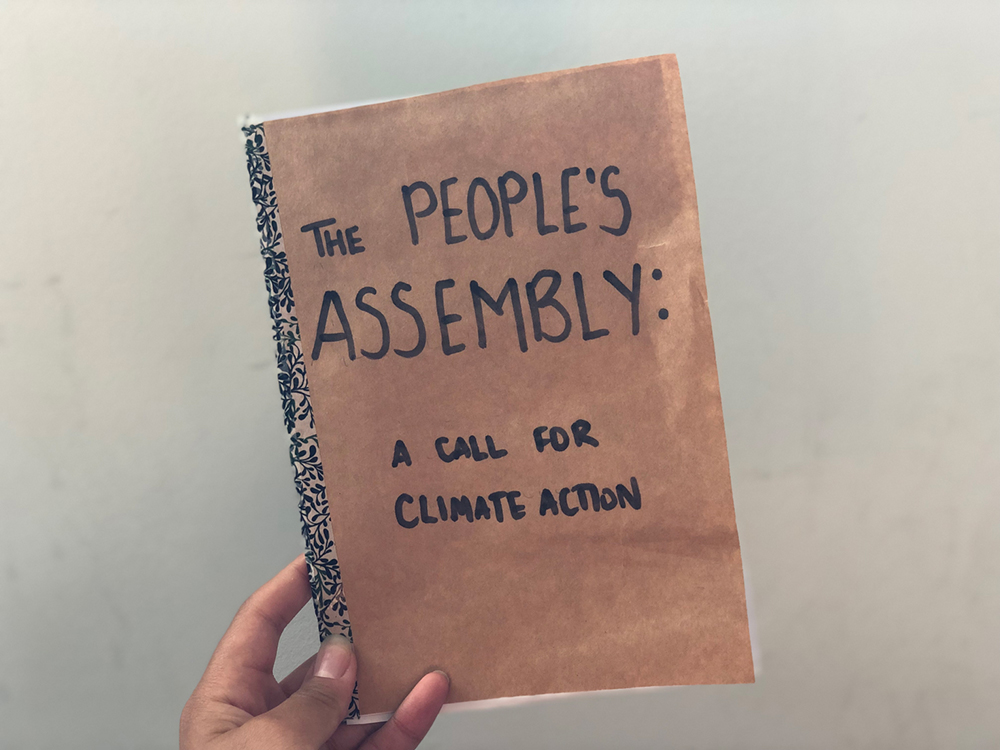

“They can look at materials, and when they journal their work they are aware of using the best material” he says. “I'm not saying don't use hard wood, for example, in a piece if that's the best material for your work. When you've gone through that process, use it, but use it with awareness. The real impact comes in the appreciation of that work or new design. It's not in climate impact, it’s not in our campus footprint. We want to use less energy, we want to recycle and we want to reuse materials. But the real impact comes in the work GSA chooses and the careers graduates go on to.”
A future, greener estate means reducing GSA’s impact to lowest possible levels. That could mean clean, renewable energy, but also the impact of social justice and building a more equitable society through climate literacy. We can all make a contribution, whether that’s attending GSA events in Climate Fringe week or getting involved in the Dear Green Pledge, a commitment to having conversations about the climate emergency every month.
Community engagement is at the heart of graduate Charlotte Craig’s work with Glasgow’s Impact Arts. Currently delivering workshops with older people at the Craft Café in Govan, people can come along and try a variety of artistic and creative techniques, while students connect with people from a different generation.

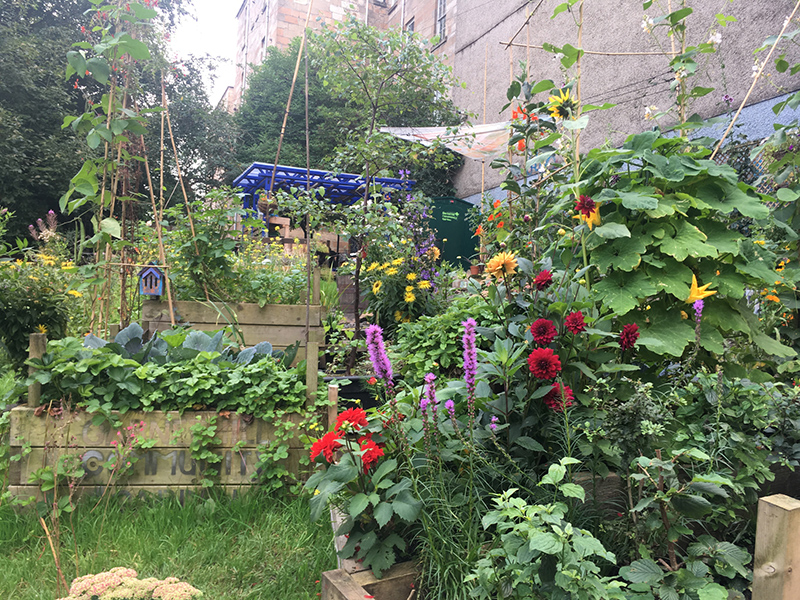
“We’ve just finished a workshop with an international and mixed group of students, from Mexico, Mongolia and Italy. Group participants connected with young people from all over the world through their creativity,” explains Craig.
“We took part in a project called Letters to the Earth and it gave us an opportunity to talk about how we feel about climate change, what we fear, what we hope for and what we want to say about it. Everyone had different things to say and it was very beautiful that people could talk about something that is so important. It was good to have a really open conversation about it and it has left us feeling hopeful about a difficult and overwhelming subject.”
Opening up that conversation is key to the success of community engagement, says Craig. “These initiatives are important, giving people the autonomy and power that they can make change. It’s not people making decisions for them, they are part of the change at grassroots level.”
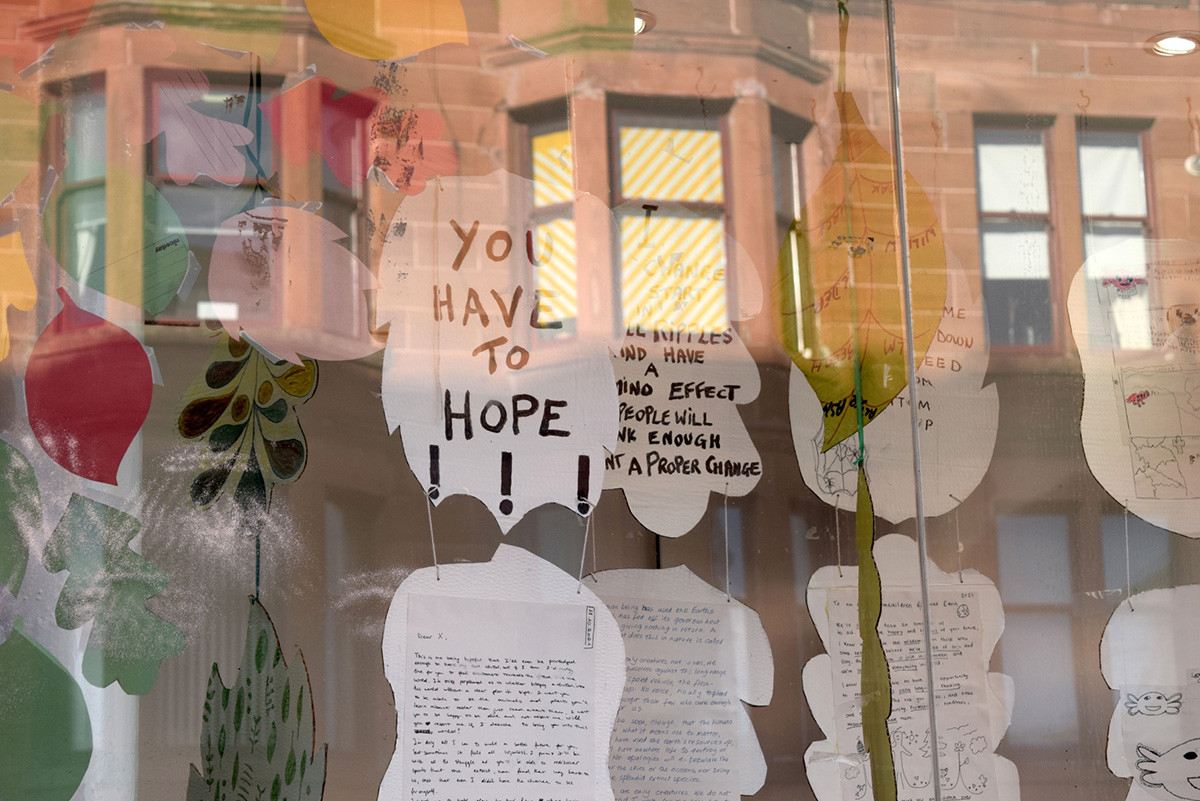
Creative projects, many with strong green principles, connect GSA with neighbours in Garnethill. Conversations with groups and residents interested in protecting the environment and keen to connect led to the creation of Garnethill Climate Group. The Friends of Garnethill Green Spaces group improves biodiversity through its community garden, and the Garnethill Community Council has seen an orchard set up in the lanes.
GSA Community Engagement Officer Harriet Simms believes huge subjects such as climate crisis, which can be intangible for some, are brought within reach with the simple act of community involvement. “People feel like they can take action and make a difference,” says Simms. “The power of a group of residents wanting to change an area and working really hard to do it is really inspiring. GSA can learn a lot from these groups and hopefully look at supporting them further through their work.” That has already started with a 12-month air quality monitoring project in the local area. The readings will lead to targeted projects and the beginning of collaborative work.
The reality of a greener estate for GSA – and putting it in place to meet net zero commitments – comes under the remit of Eleanor Magennis, Head of Strategic Estates. As COP26 meets in Glasgow, her team is kicking off a strategy asking what we need to do to make a net zero campus, and what we can do to help the city’s target of carbon reduction net zero by 2030. Experts – from mechanical and electrical engineers to architects and project managers – will be working collectively with GSA Governors in developing this strategy. Their reach extends far beyond the physical estate, to ways of working and travel.
“As well as looking at materials students and staff use, we’re working with the maintenance team and at the vehicles we use within the estate,” says Magennis. The car park at the Stow building is one area the team are looking at – could there be other uses for it? “We don’t have many green spaces on campus, so what can we do to work with the community and encourage biodiversity in some of the spaces we have?”
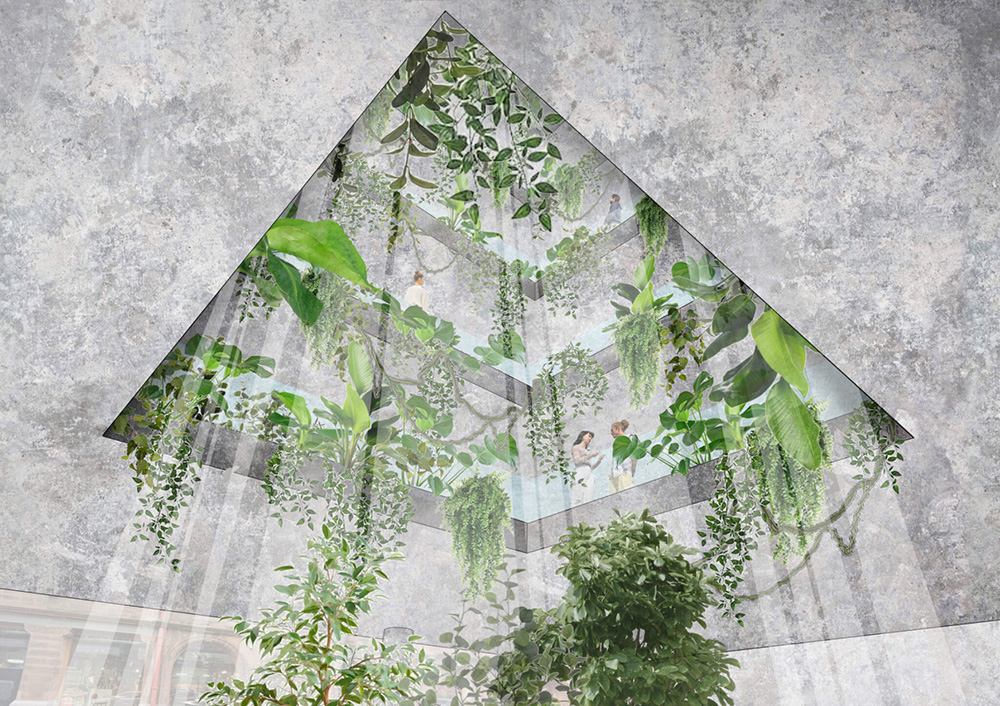
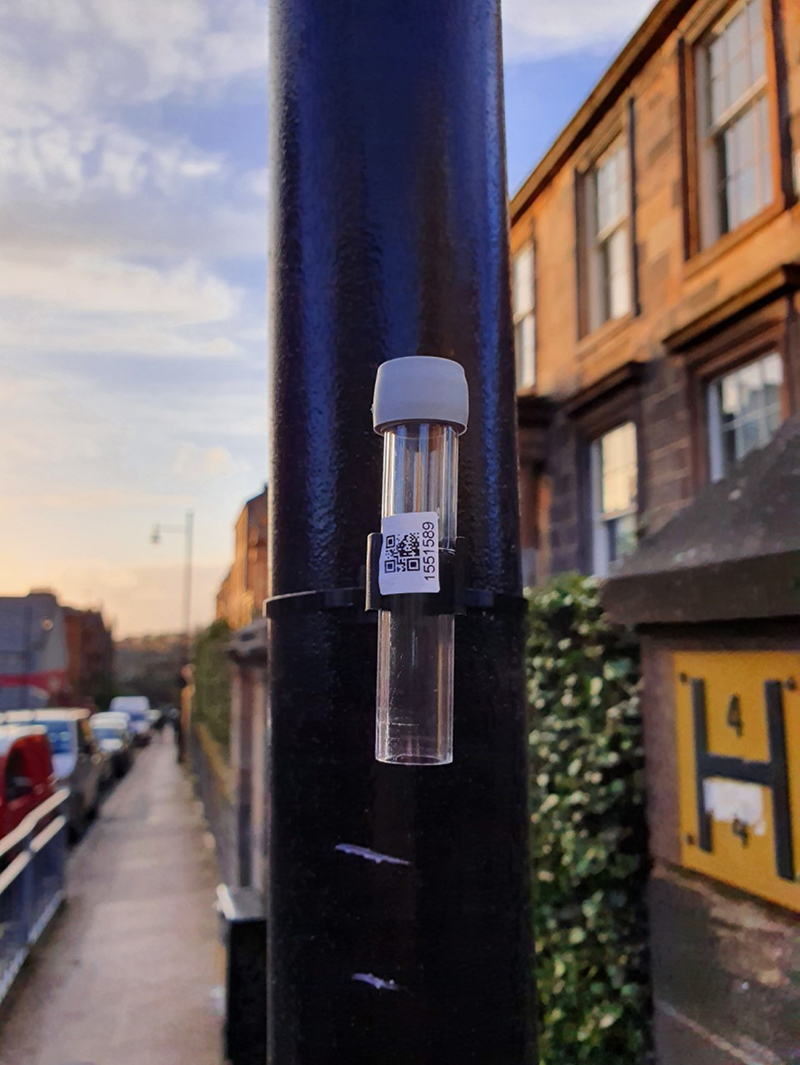
GSA is working with Glasgow City Council to facilitate the Underline public realm improvements between St George’s Cross and Cowcaddens for a pedestrian avenue bisecting the M8. The Mackintosh Building rebuild plans have also recently been announced, with sustainability at their heart. Magennis sees this as an opportunity to “show leadership in how you can work on a heritage building, but also help in the response to the climate emergency.”
“Quite simply, it touches all aspects of our lives,” stresses Magennis. “There’s so much we can do. We need to talk about it but we also need to take action. The time is now for action.”
Published in October 2021, the purpose of the Strategic Outline Business Case (SOBC) is to consider and evaluate the options for The Glasgow School of Art to respond to the impact of the 2018 fire on the world-renowned Mackintosh Building. It identifies a preferred solution, meeting the academic and institutional needs of the GSA, whilst reflecting the architectural, historical and emotional significance of the building, the expectations and aspirations of the local community, and the potential to strengthen the cultural and economic performance of the Glasgow City Region and beyond.
Part of the GSA response is the embeddding and delivery of a High Level Sustainability Strategy and Zero Carbon Refurbishment Specification brief, led by Professor John French. The following passages are extracts from that brief, and a summary of the SOBC can be read on the GSA website here.
Unique to the Mackintosh Building project will be the opportunity to use art and innovation to educate and exemplify the principles of the creative economy linked to the history of the arts and crafts in Glasgow. True to the principles of the original Mackintosh Building, the design team will operate across a range of academic disciplines and across the pure arts and practice-based digital environments to develop an interpretation appropriate for the twenty first century context.
The strategic position is to incorporate sustainability principles through all aspects of the project development and delivery and in relation to all of the project deliverables. These will be core values rather than later additions. The approach will represent good value for money whilst challenging conventional norms around historic buildings. A key indicator will be building performance and user satisfaction delivered through these principles of sustainability, and the project to deliver the Mackintosh as an exemplary rebuild will in itself be an ‘educator’ and enable leadership and dissemination to others.
The architectural and built environment sector represents a major contributor to greenhouse gas emissions in both construction and operation and the historic stock of energy inefficient buildings in the UK is a challenge of the first order. In developing this specification the challenge must be to deliver locally in terms of the original vision, form and functionality and also to deliver interdisciplinary zero carbon solutions whilst at a strategic and international level to provide much needed leadership in this space - especially in the context of the GSA response to the climate emergency.
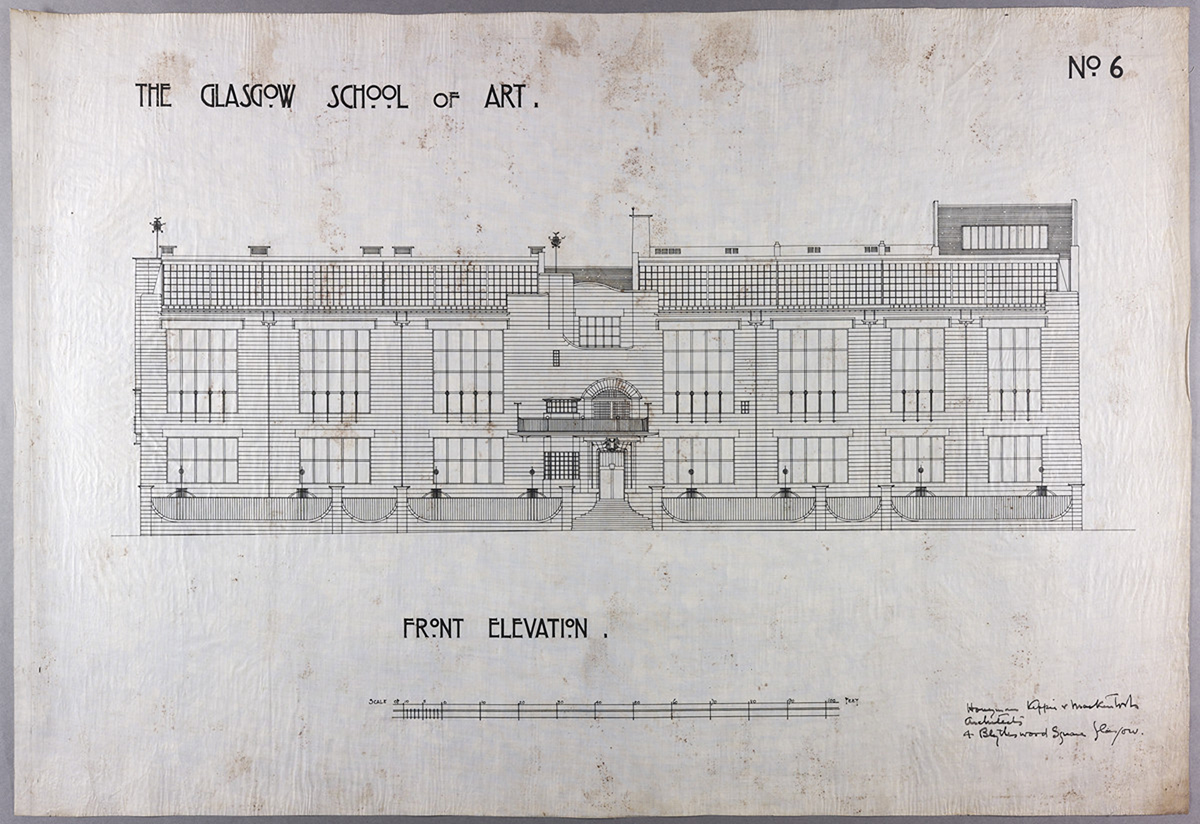
The Inter-Governmental Panel on Climate Change (IPCC) has declared a climate emergency. The United Nations has also published the its Sustainable Development Goals (UNSDG). Major capital projects including refurbishments and/or rebuilds can and will make a significant contribution to addressing the UNSDG. Goal 13 addresses climate action, which is of particular relevance to the Glasgow City Council context which declared a climate emergency and set a 2030 target for zero carbon transformation. However, addressing the. UNSDG more widely also allows the GSA to address a wide range of environmental and socioeconomic indicators across its community of interests.
A high-level objective of the Mackintosh Building will be to track progress against the UNSDG through setting targets and measuring benefits at the project level and the societal beneficiary level.
Heritage projects are challenging due to the limitations created by architectural legacy and materiality and a such they pose an additional challenge to public sector bodies seeking to achieve transformational change to deliver against zero carbon targets.
The UK Climate Change Committee was successful in advising the UK Government to adopt a Net-zero target of 2050 and a 70% reduction by 2030. Decisions made in 2021 /22 at the level of the project specification and initial high-level brief will directly impact upon carbon emissions in 2030. Major refurbishments and/or rebuild projects often take five or more years requiring a step change in the design development process. This delayed impact is fully understood in relation to the Mackintosh Project which, by the time of completion societal expectations of zero carbon transformation will likely have moved forward significantly.
Imperative to the transformation is the early adoption of new approaches to ‘fabric first’ design that enable comparable cost with an enhanced sustainability performance. This project is seeking to operate against this objective and produce a world class asset whilst also making significant progress in delivering against climate change targets.
The building project should aim to be net-zero greenhouse gas emission in both its material design and delivery as well as its operation and seek to adopt renewable energy solutions wherever possible.
You can read the Strategic Outline Business Case for the Mackintosh Building online here.
Mackintosh School of Architecture graduate and Grimshaw Architects Chairman Andrew Whalley gives
some
background on the climate crisis in the context of the architecture profession, and details
Grimshaw’s
commitments in response.
Part of Concealed by Nature at Close of Play: Climate Emergency and Creative Action.
Textile Design graduate and 2021 Newbery Medal winner Kialy Tihngang talks about Useless Machines, a
project resulting from research on electronic waste dumping, a form of climate colonialism where
industrial waste from the global north is illegally dumped in countries in the global south.
Part of Concealed by Nature at Close of Play: Climate Emergency and Creative Action.
This exhibition of three parts was a collaboration between GSA and Glasgow Art Club. The main gallery at Glasgow Art Club hosted work from an open call of Glasgow Art Club members, GSA staff and students, relating to climate change, climate emergency, climate justice, or sustainability. On the first floor of Glasgow Art Club, there was a focus on sustainable making processes through two exhibitions: Silver Narratives Worth Celebrating and In-Process.
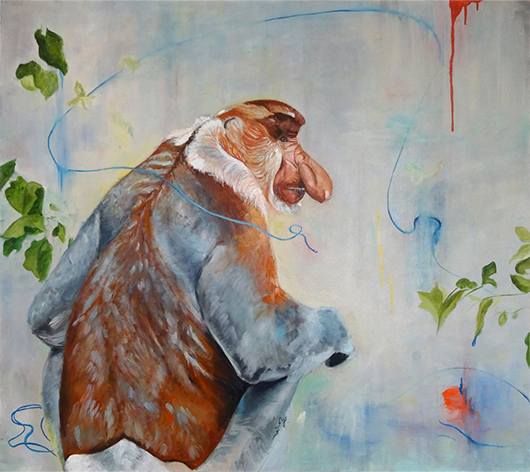
As part of the Art of the Possible programme, Glasgow Art Club exhibited the work of Karen Westland, winner of the GSA Sustainability Award in 2015. Westland is a Glasgow-based silversmith who advocates for responsible practices through innovative craftwork and research. Their work is influenced by photonics, optic designs and applications to explore how we engage with technologies for sustainable development in Western society.

In-Process brought together the work of four artists from FIX Photography Collective – Joy Gregory, Jess Holdengarde, Melanie King and Christina McBride – whose practices question and expand the role of photography in relation to a wider discourse around landscape, the environment and issues of sustainability. The works explore a range of media which utilise natural materials and components of the landscape, considering the photograph in a landscape of ecological ruin and questioning the role of photography in a changing world. This exhibition formed part of the Art of the Possible programme at Glasgow Art Club
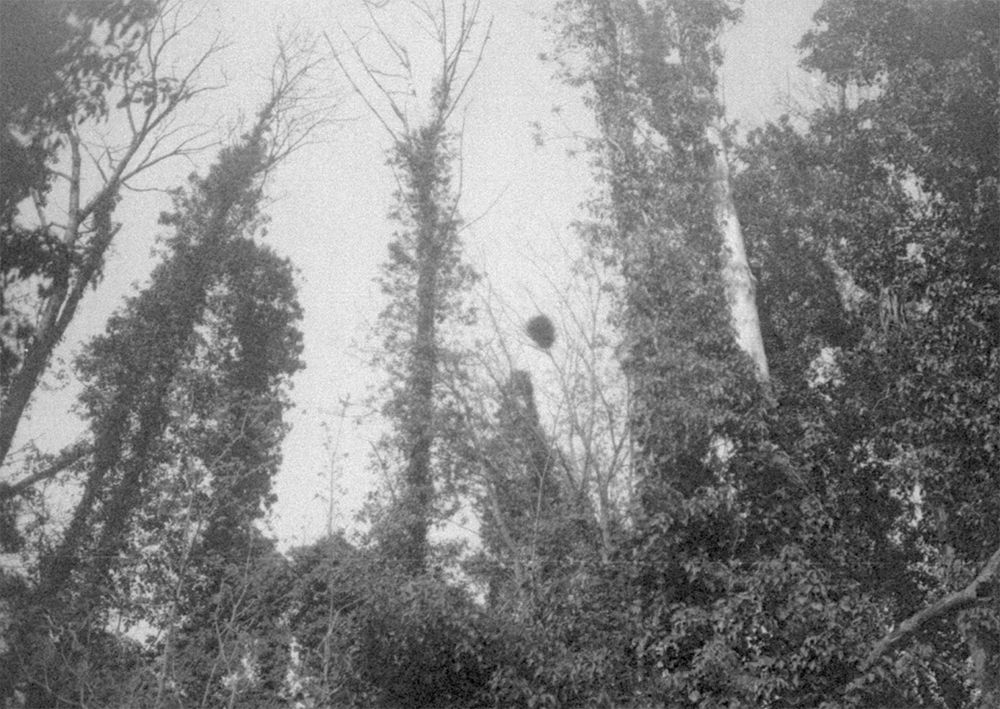
This walking tour featured eight stops in the city and its surroundings to better understand Glasgow’s role in the making of a fossil burning world. The stops will illuminated how the economic effects and political power and conflicts associated with coal and then oil transformed the city during the nineteenth and twentieth centuries. The tour was hosted by University of Glasgow Historian Ewan Gibbs, and co-hosted by The Drouth magazine.
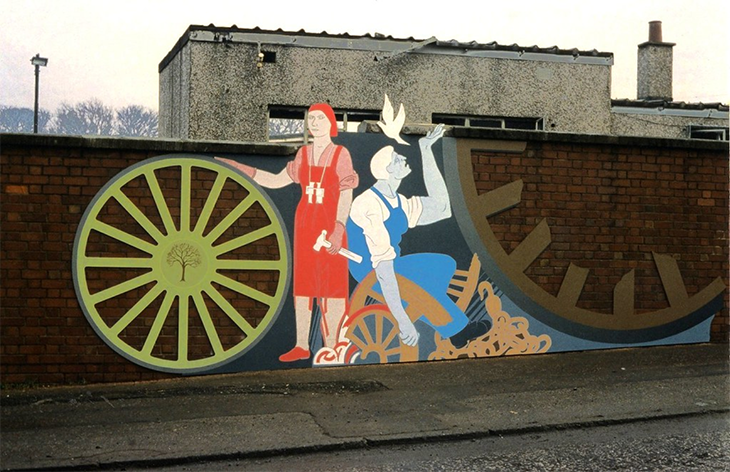
This event brought together photographic and lens-based practitioners from Fix Photography Collective, The London Alternative Photography Collective and The Sustainable Darkroom to discuss sustainability in photographic materials and processes. The discussion will considered the role of photography in an ecological crisis, and reflected on ‘the collective’ as a means to support and enable practice, education and action. The event was hosted by GSA MFA.

The Museums and Heritage Sector declares a climate emergency. However, there is no ready info available on what museums can do. How can this part of the sector challenge existing paradigms and make a radical response? This event coincides with Earth Day 2022, and is presented in association with Glasgow Women’s Library and UAL.
